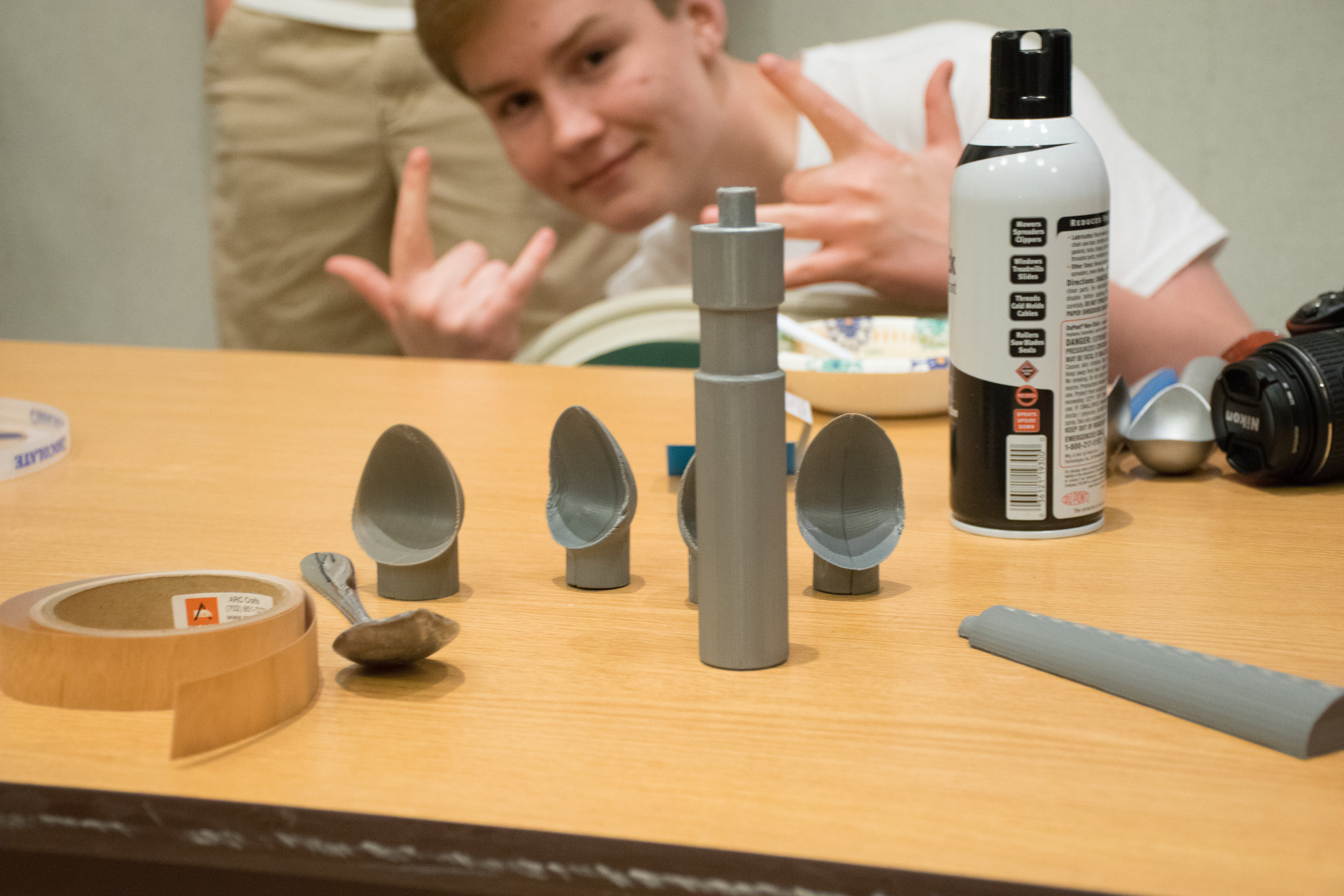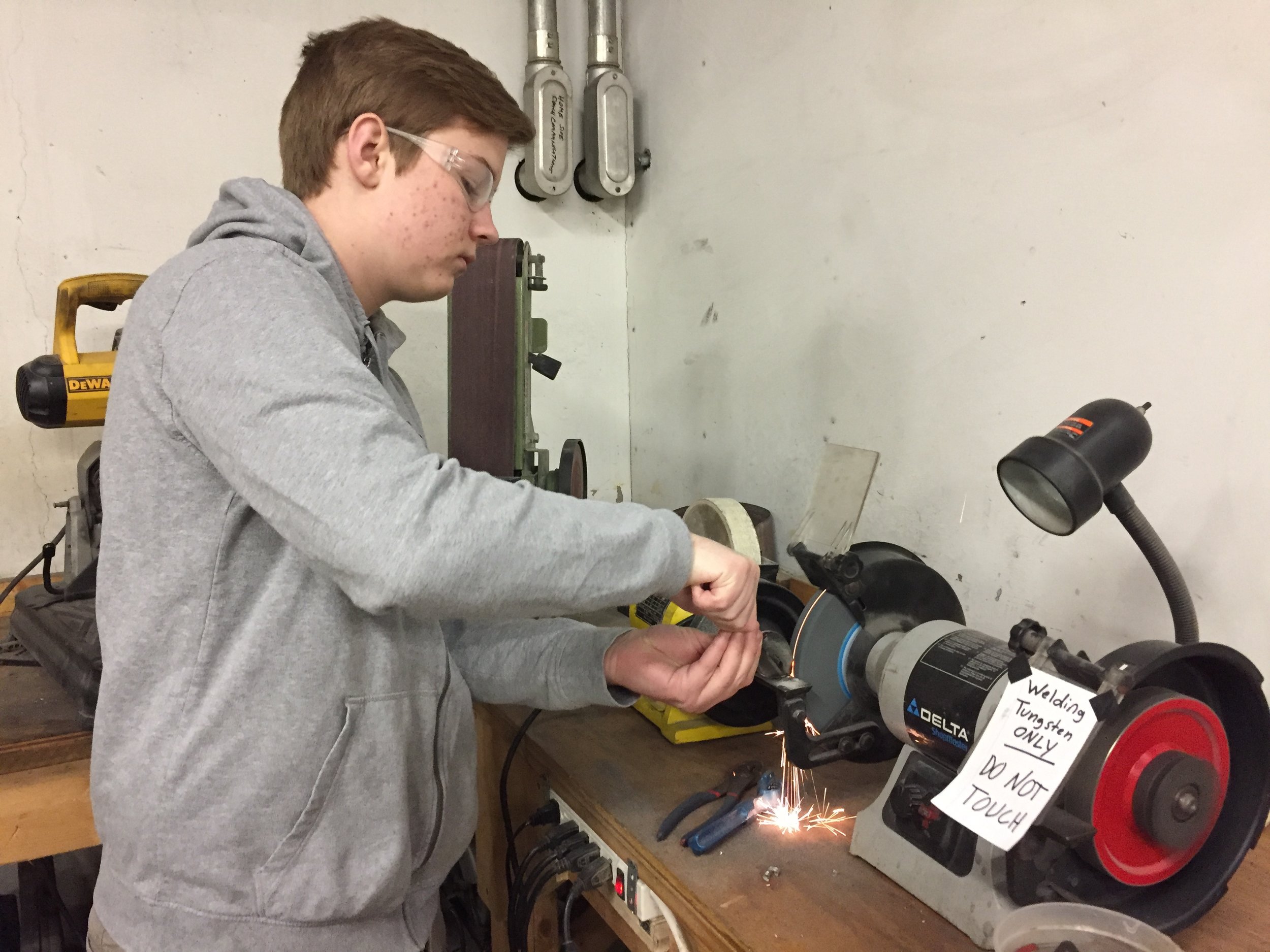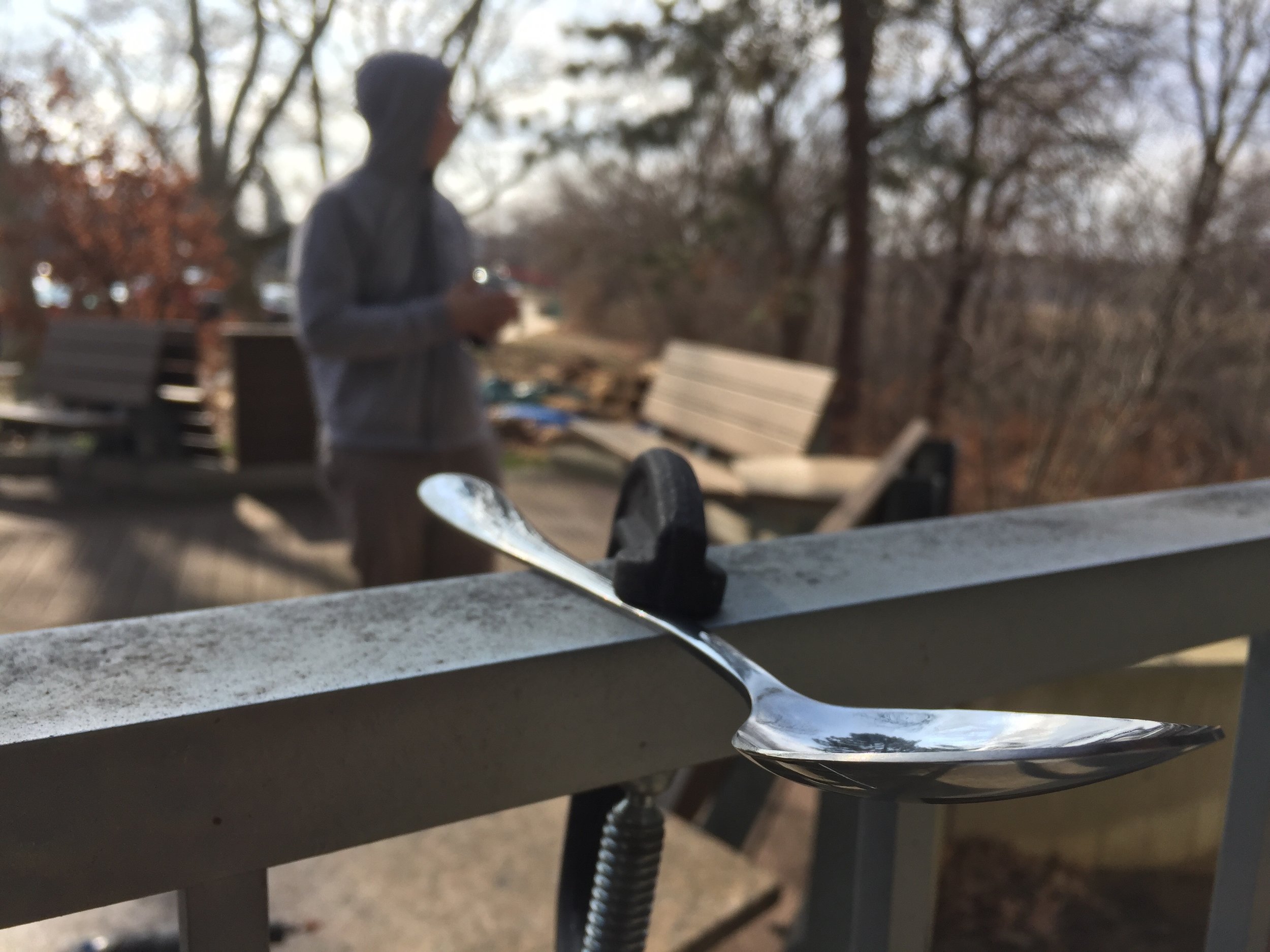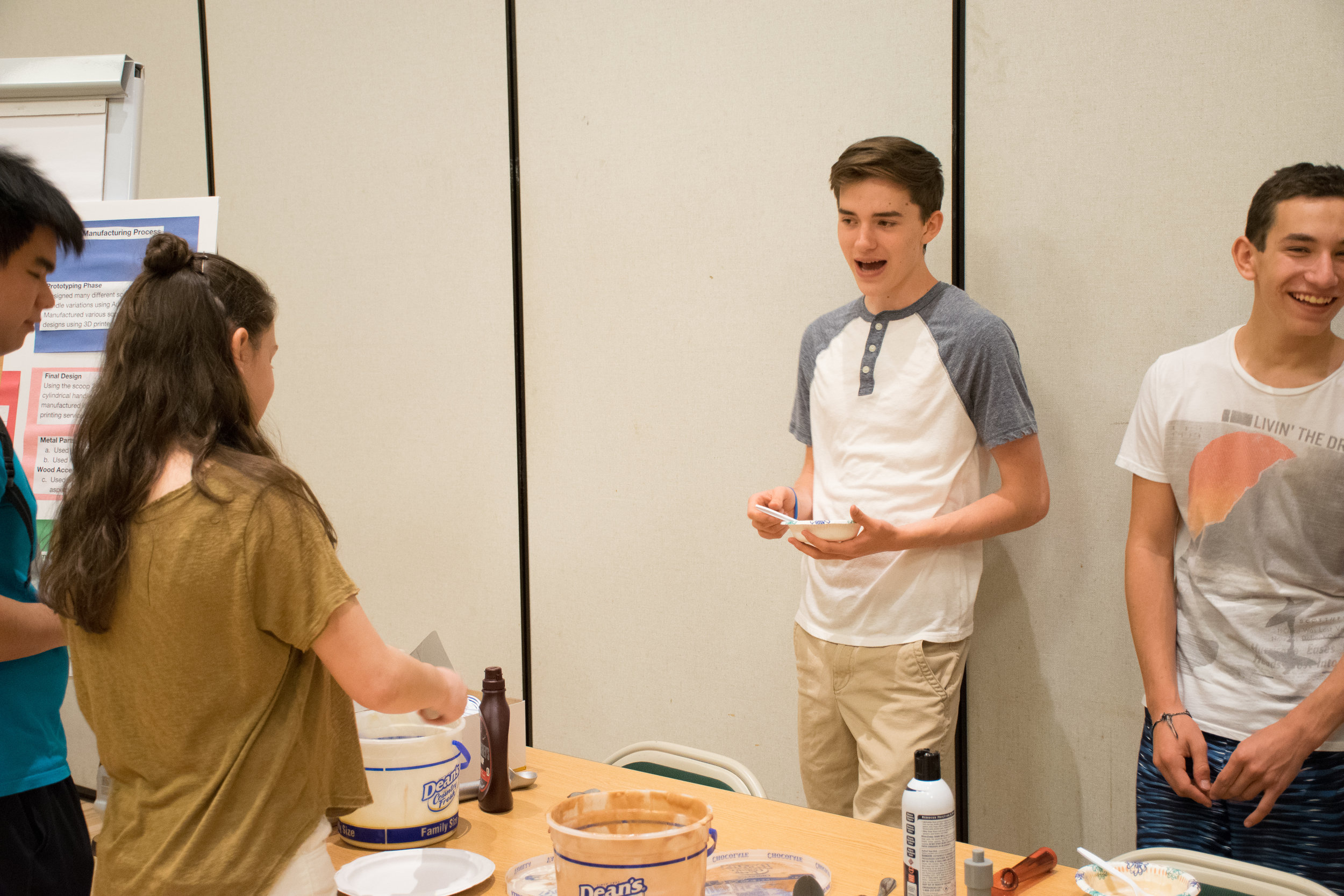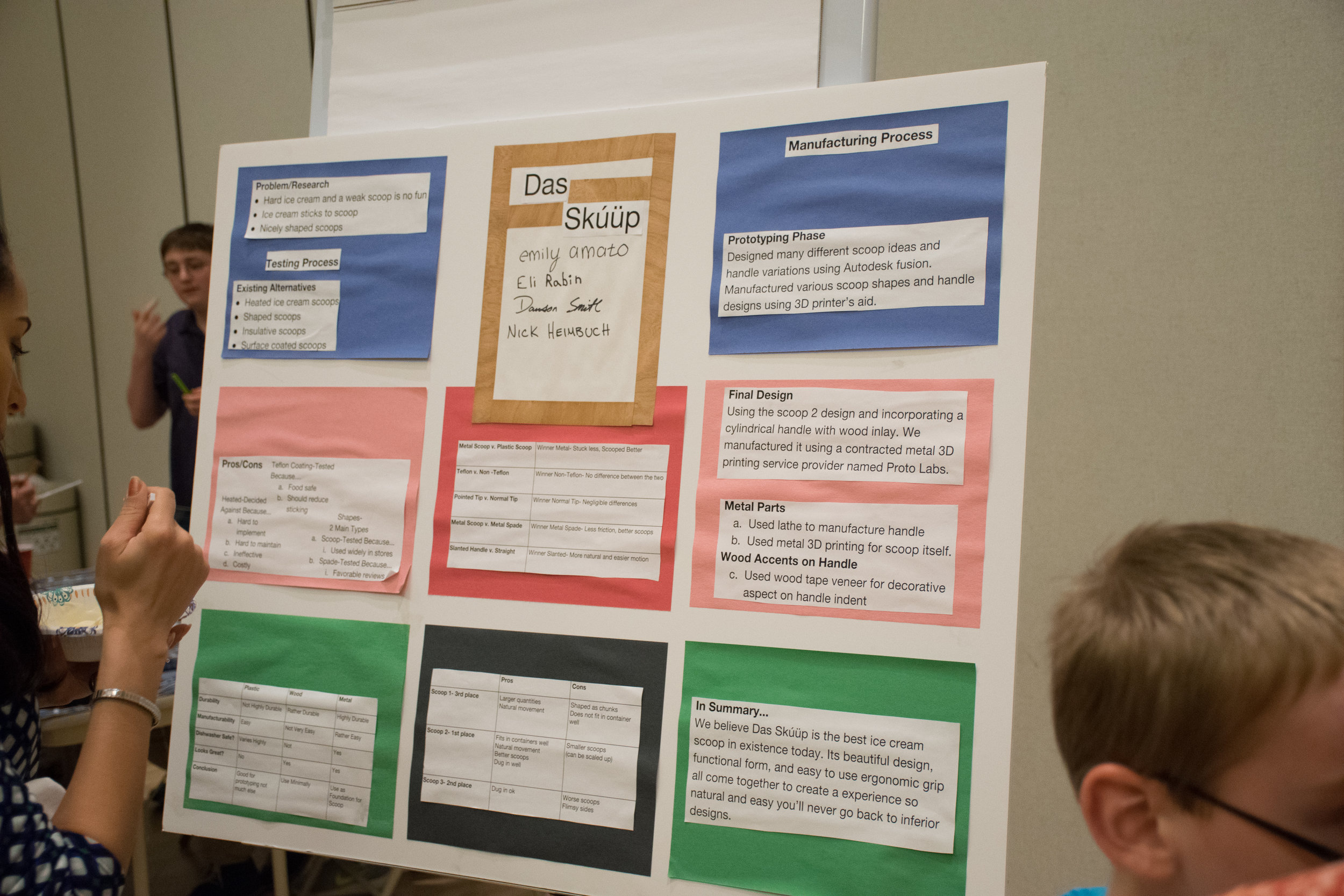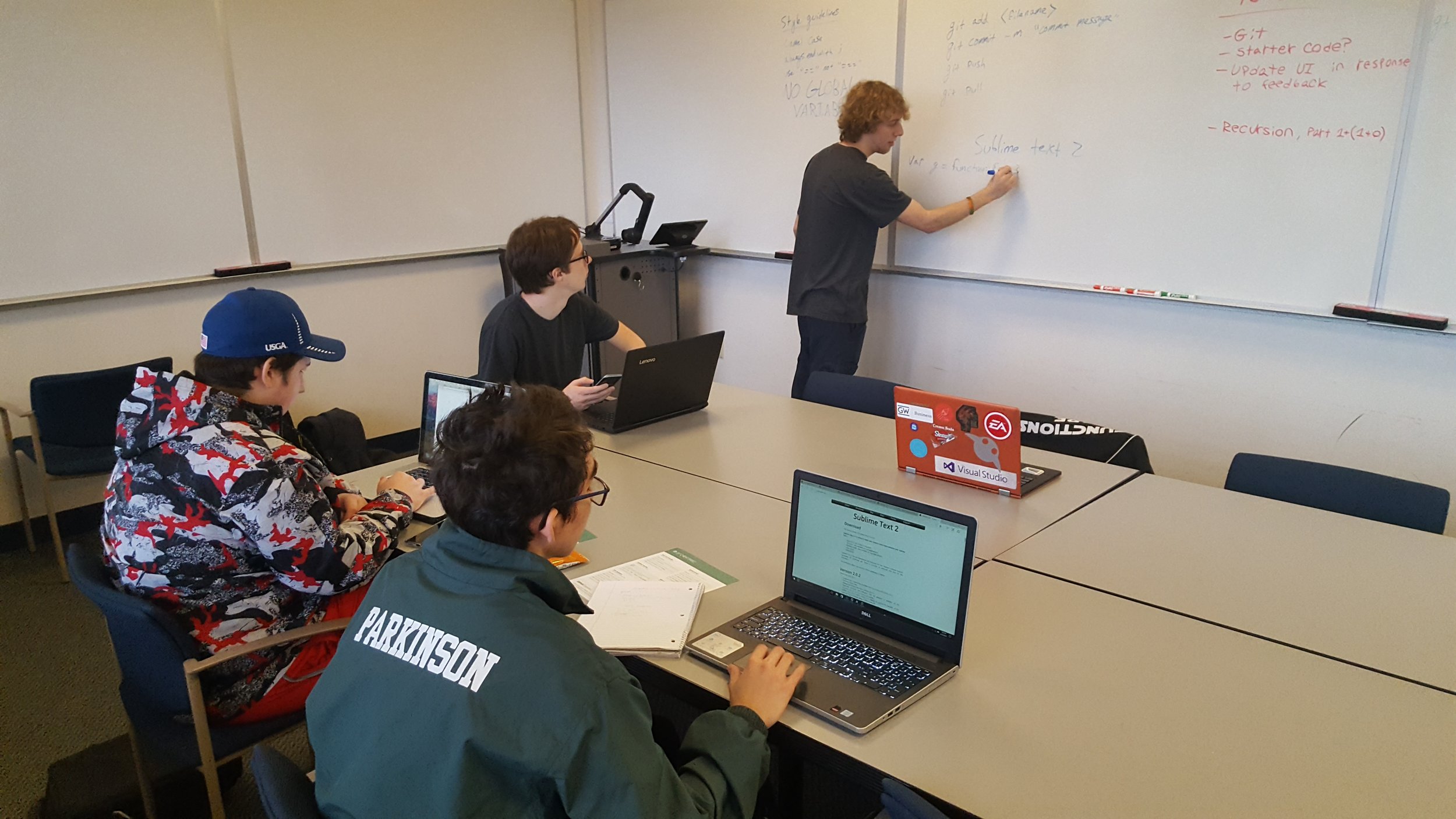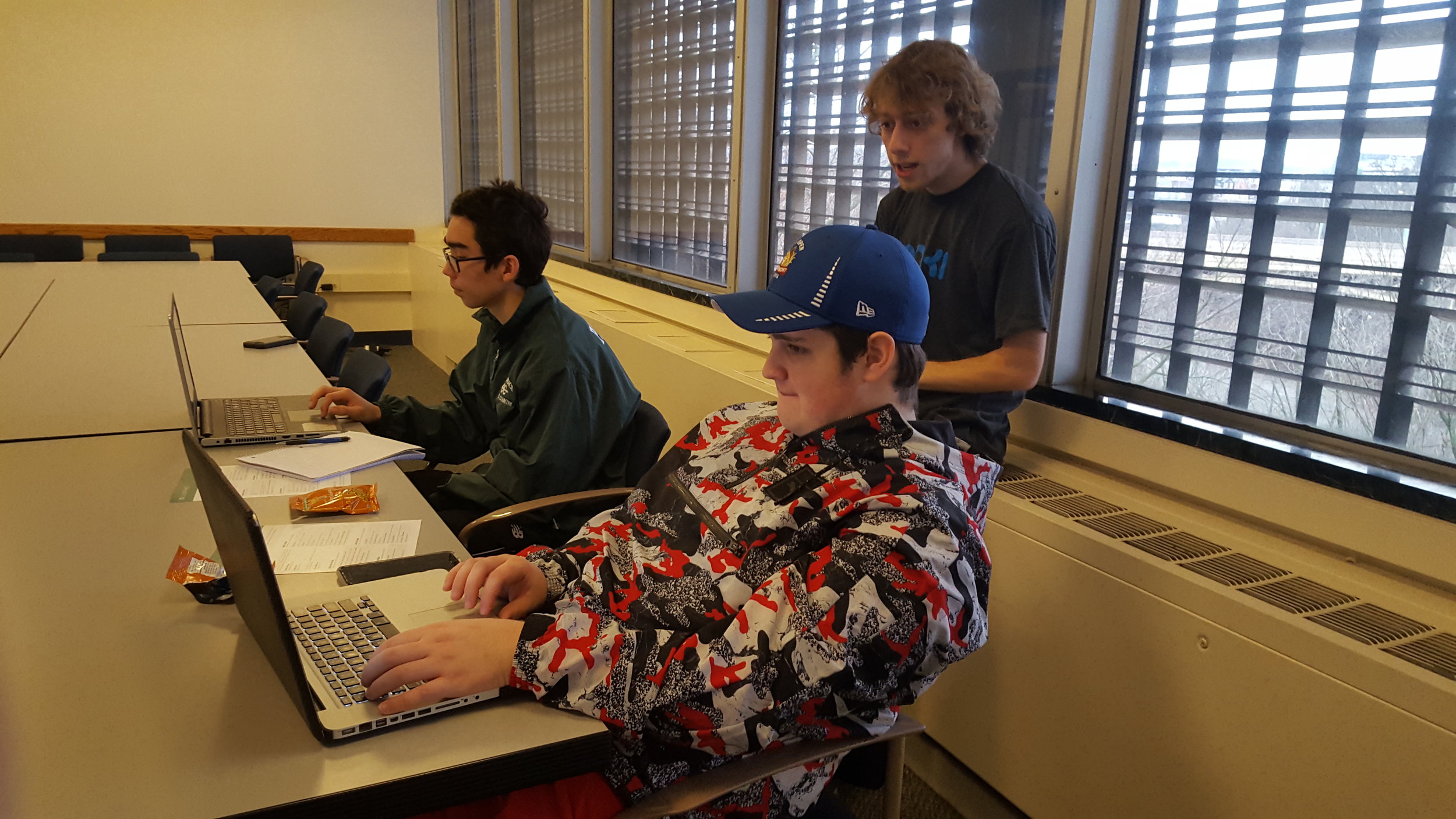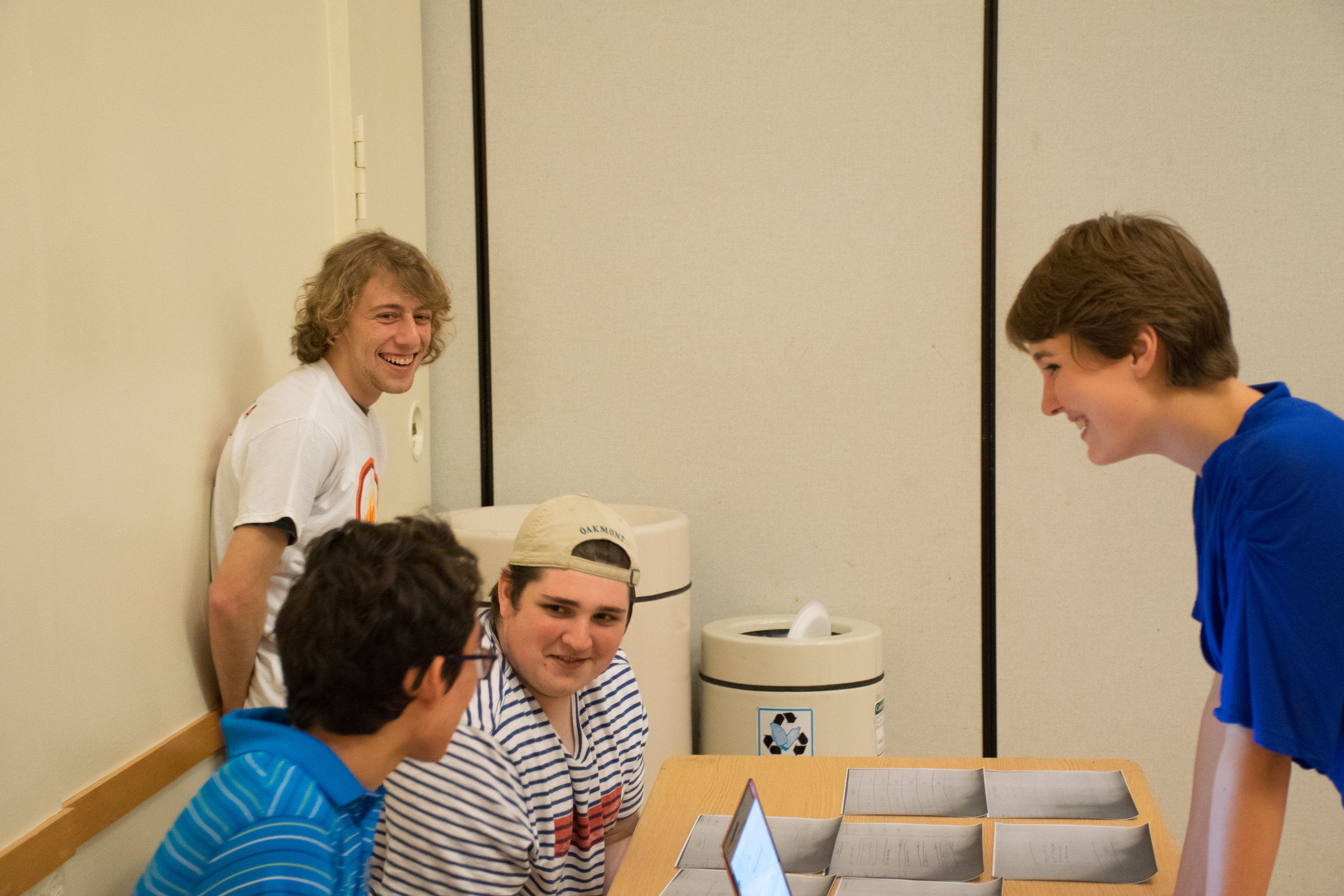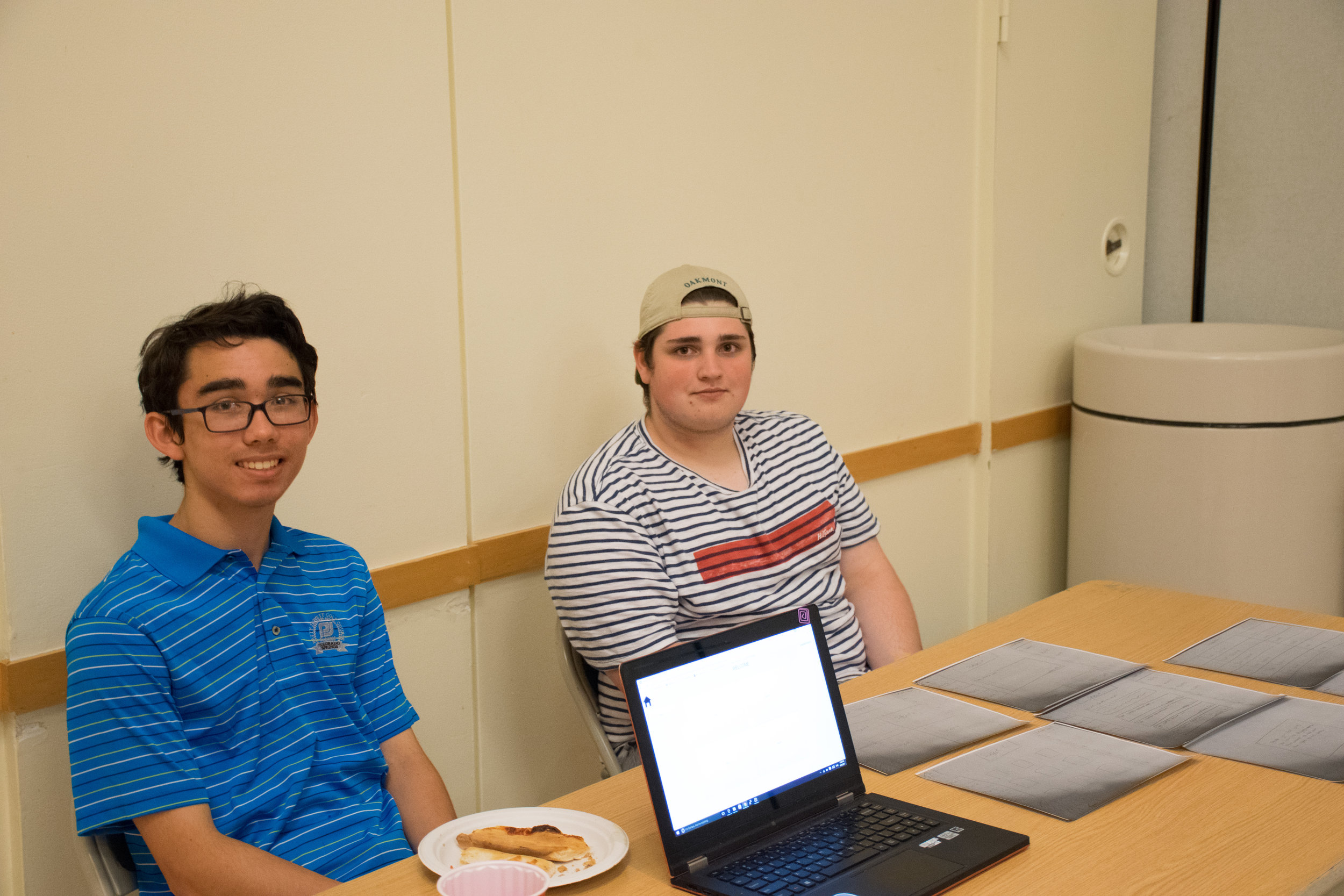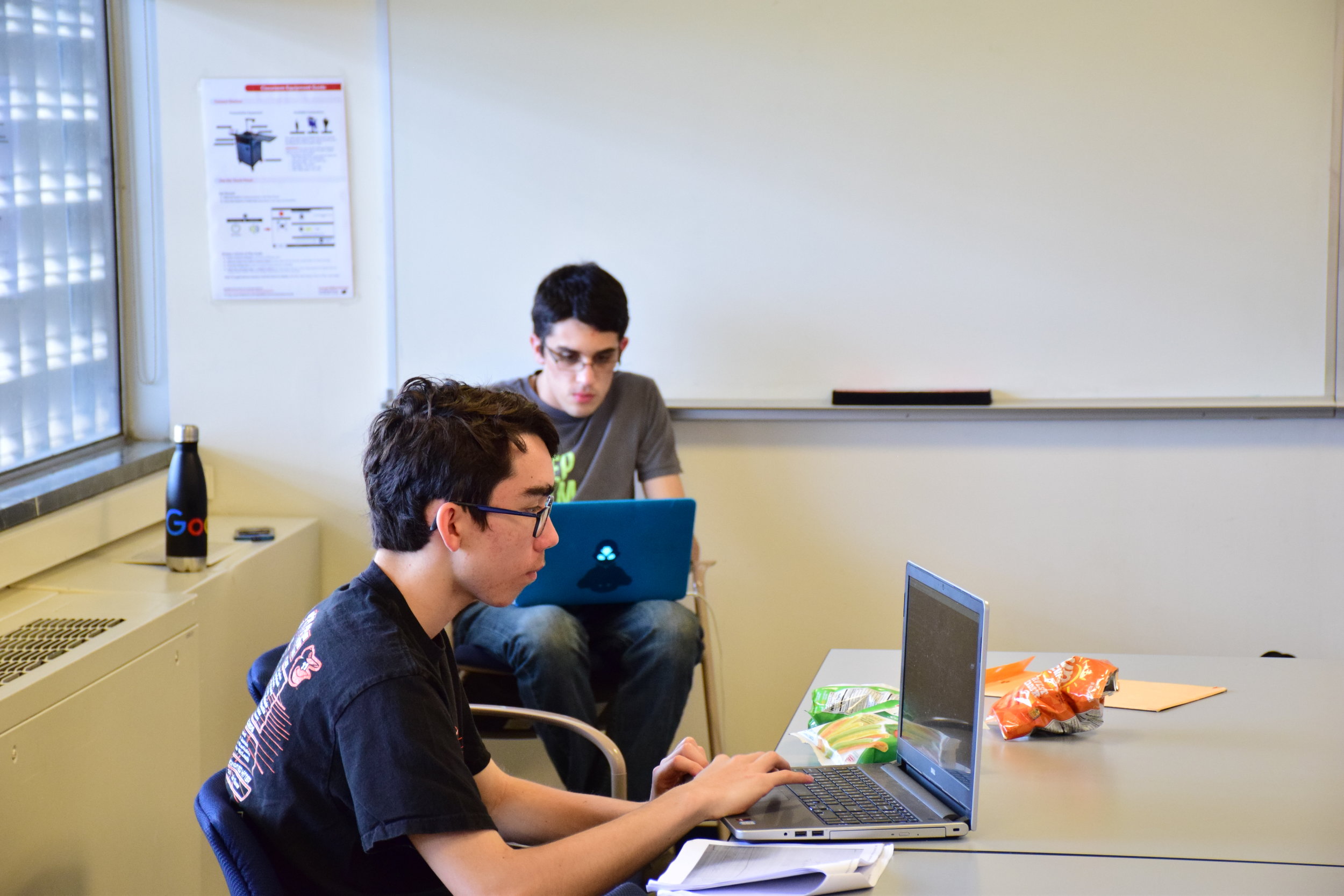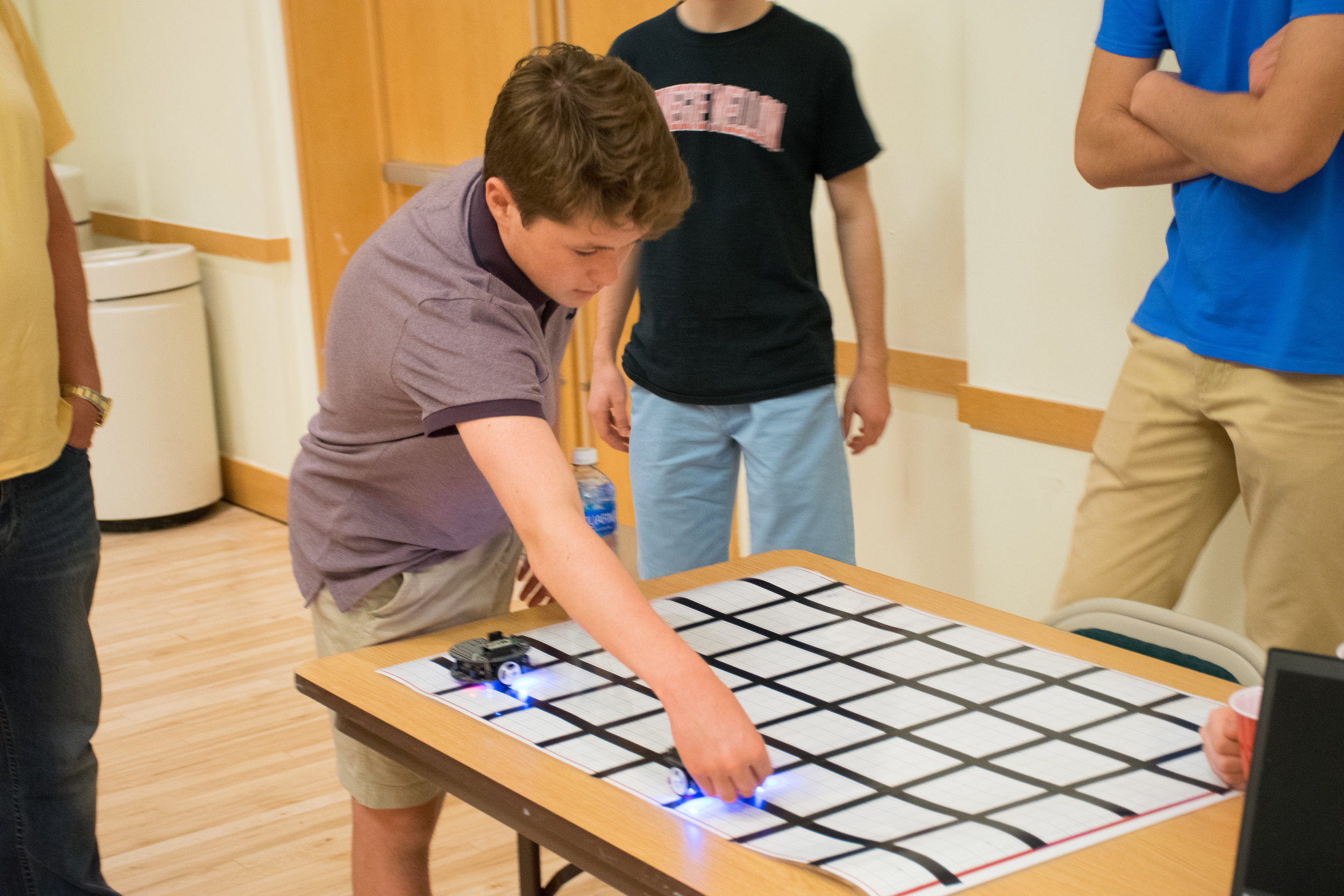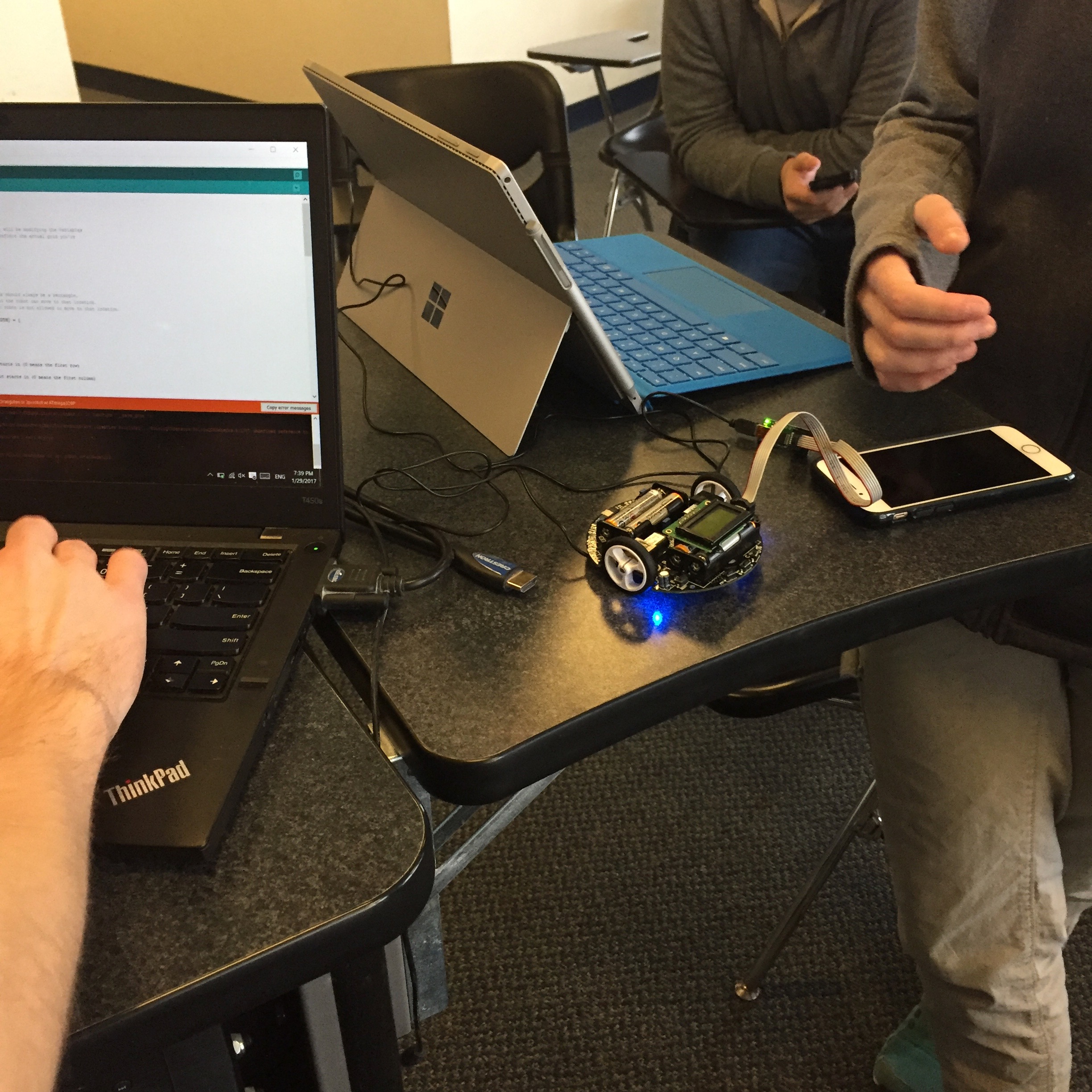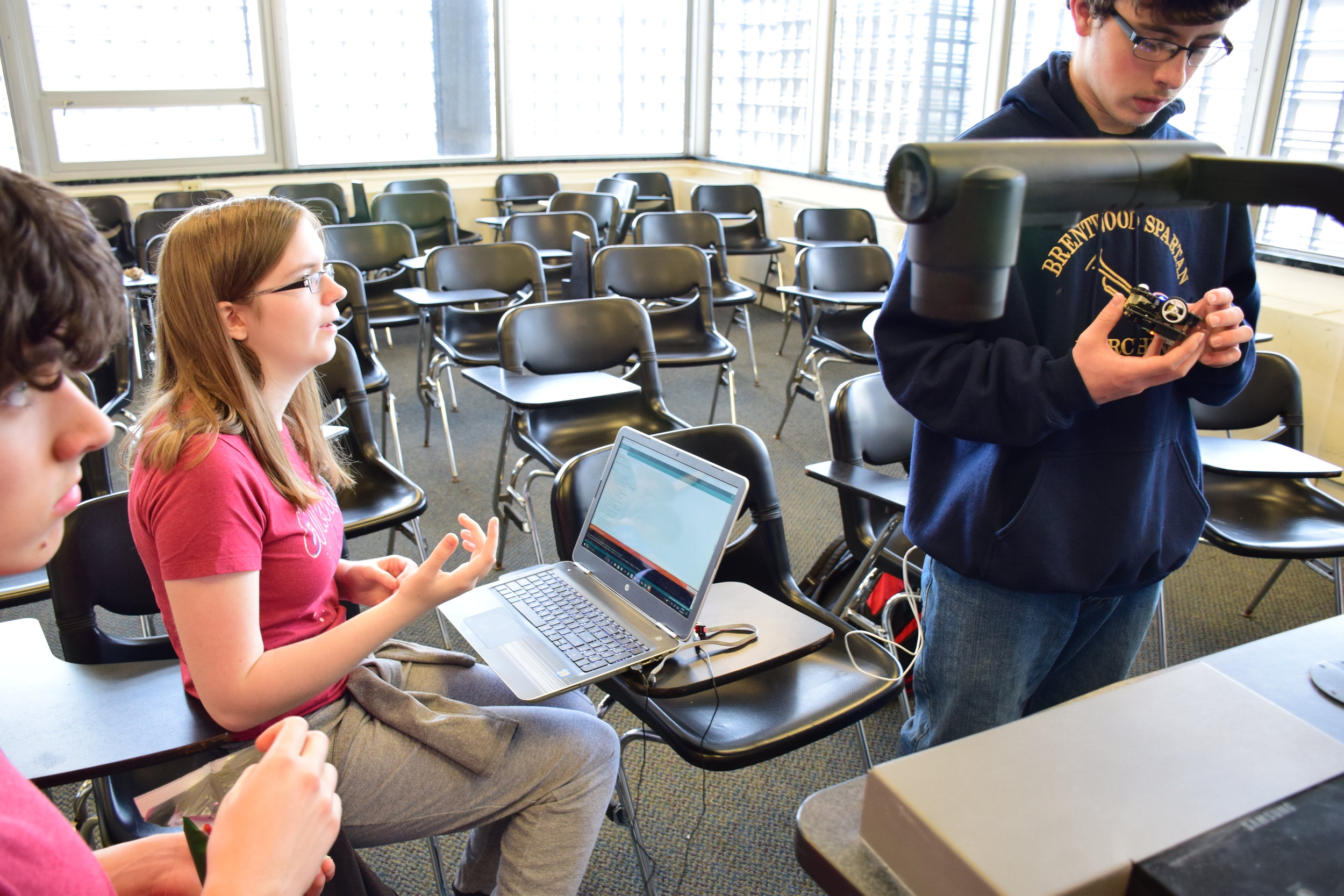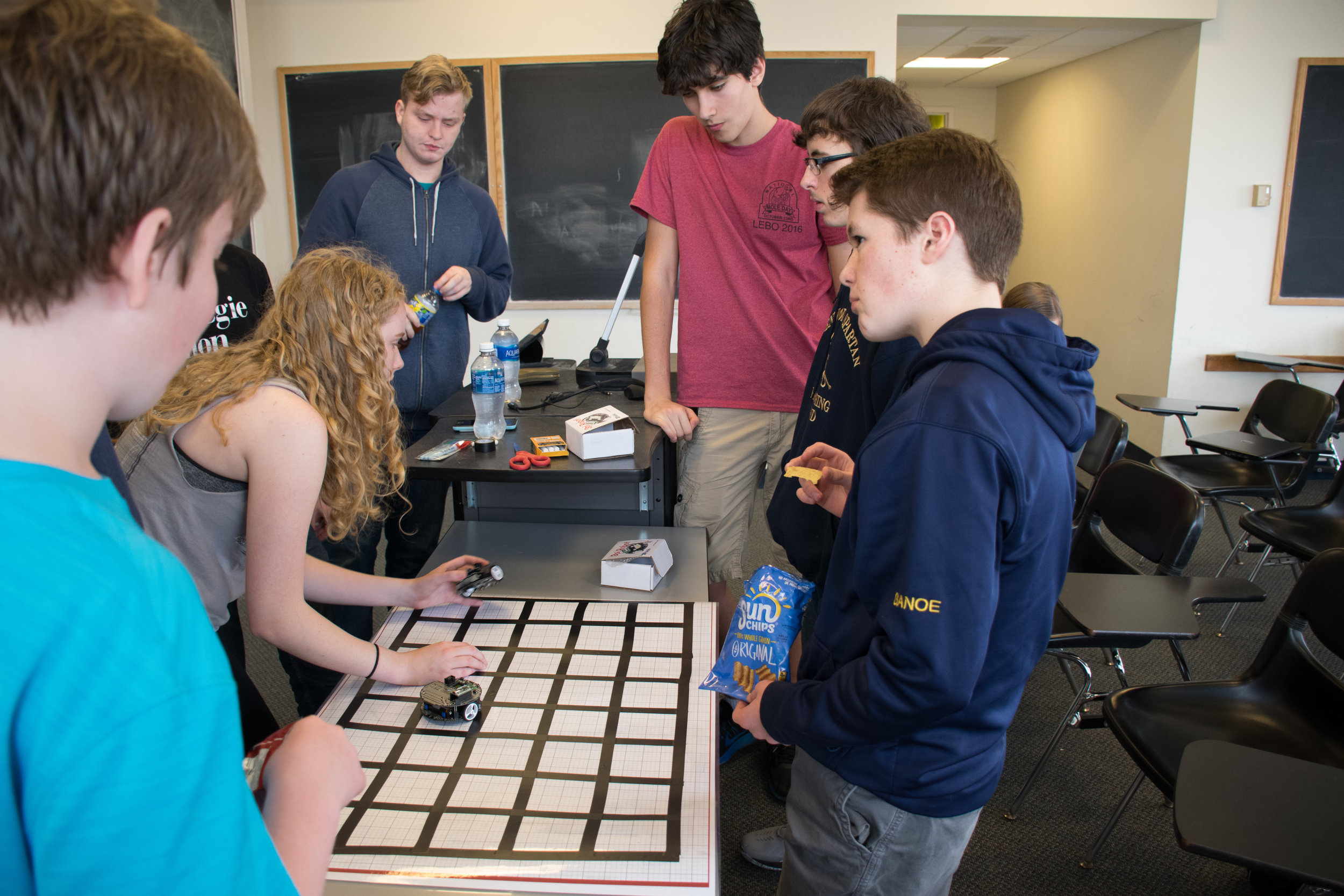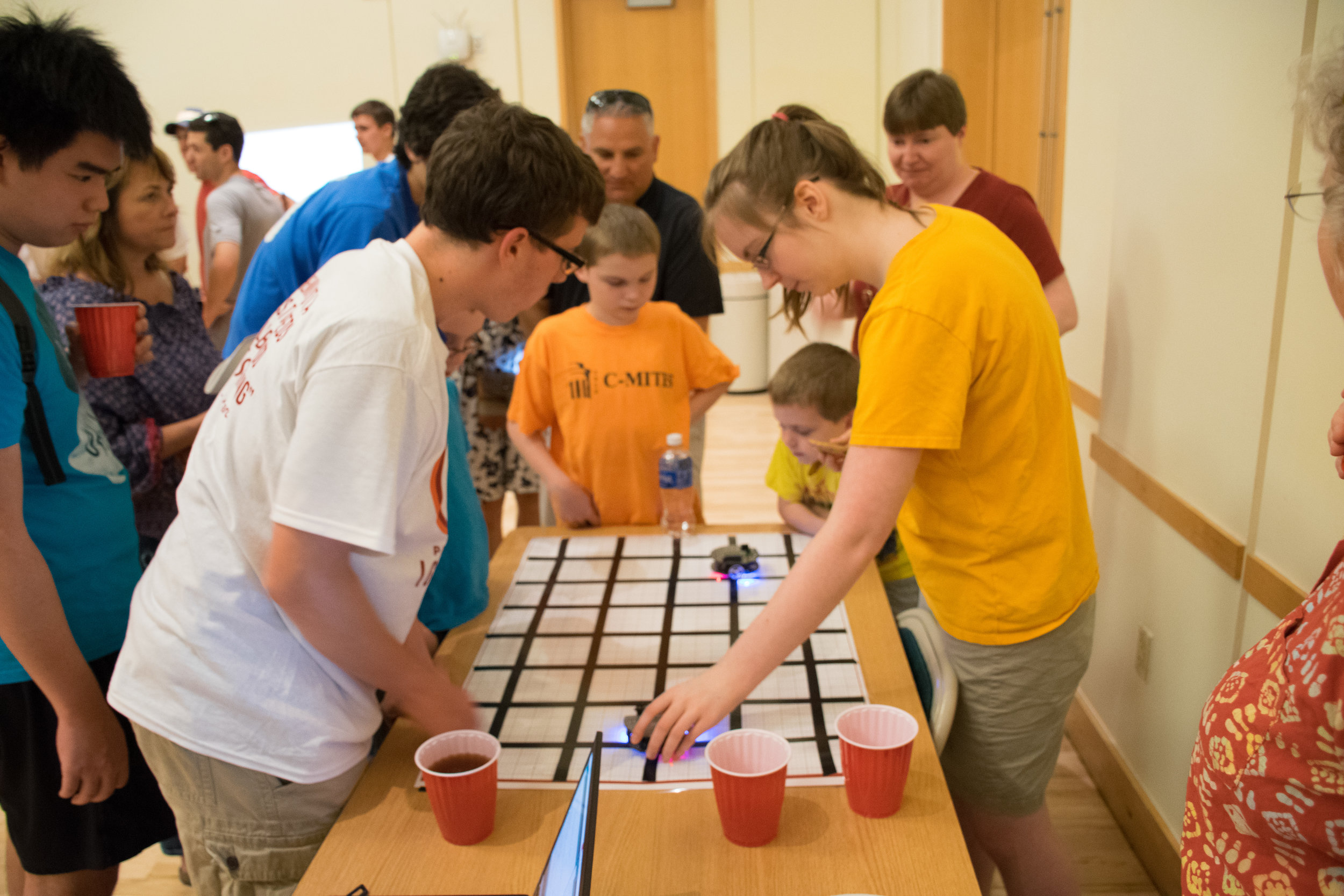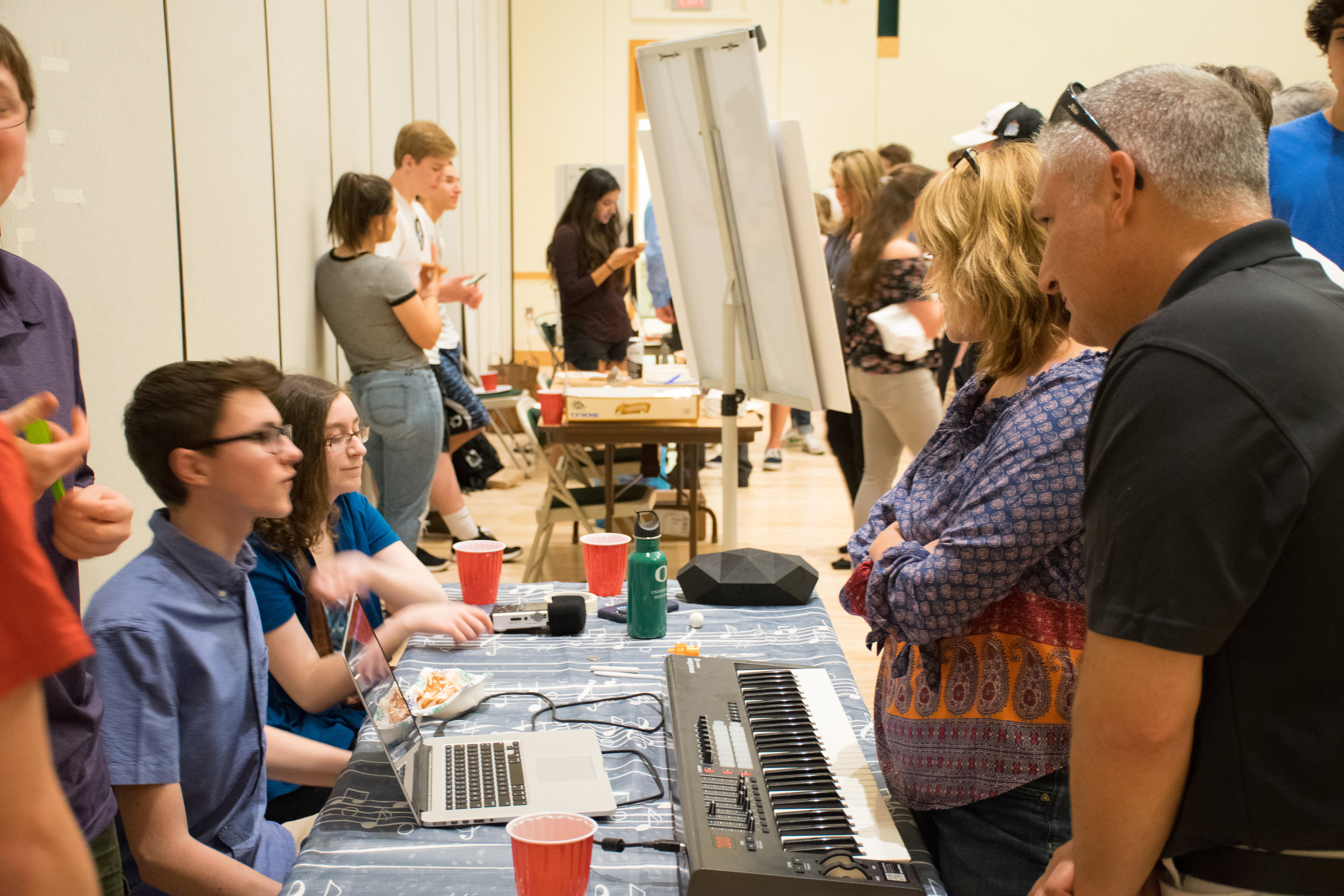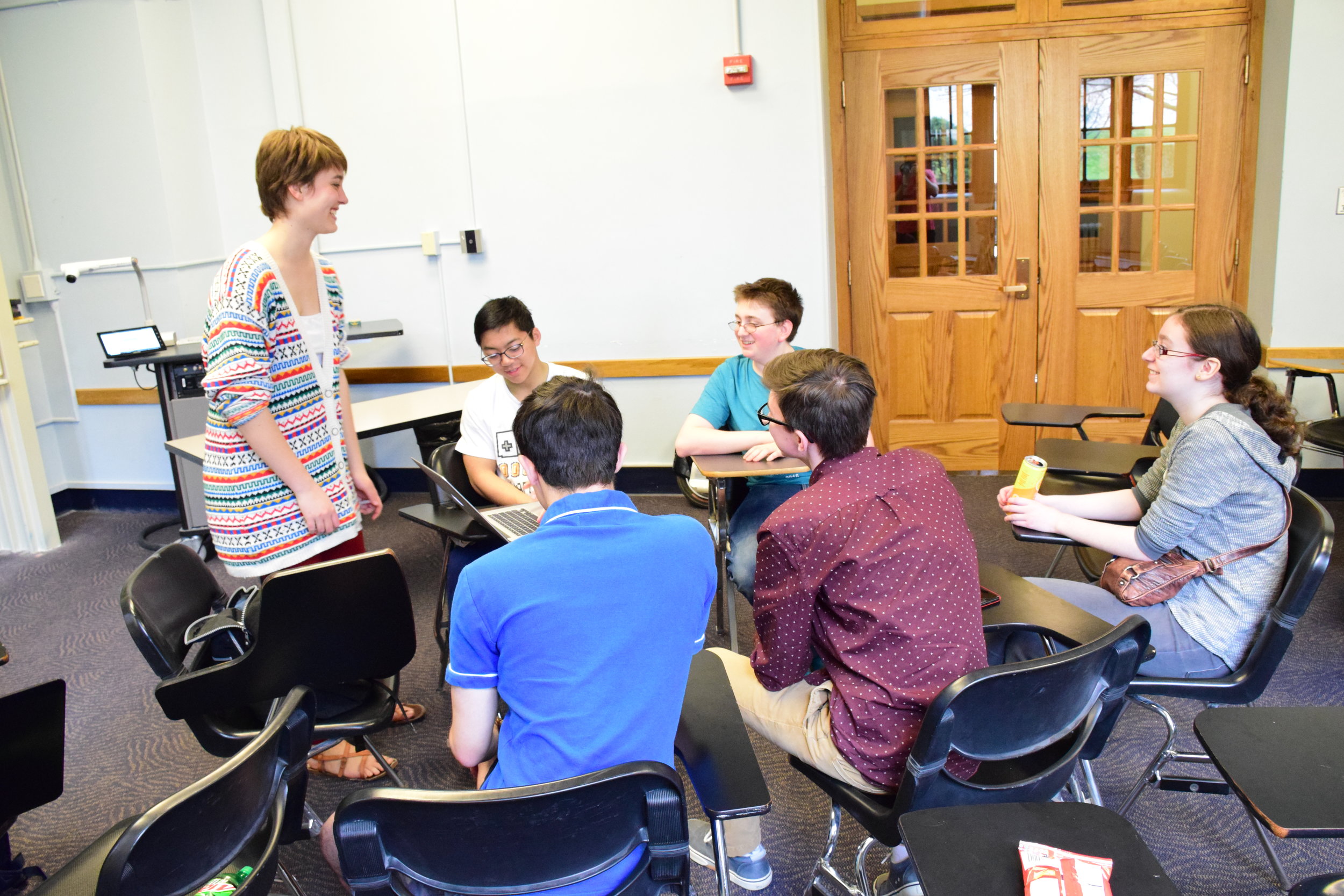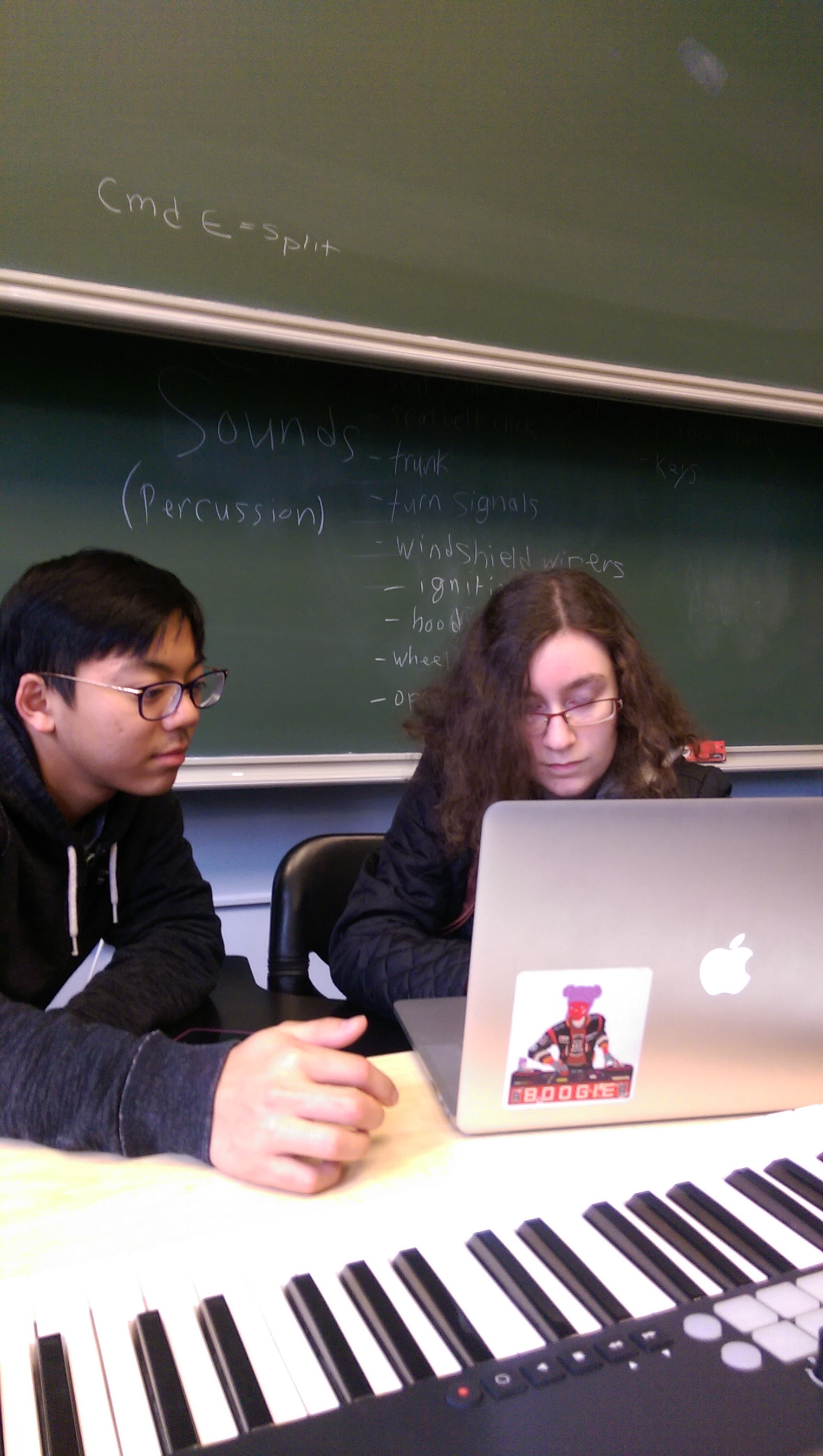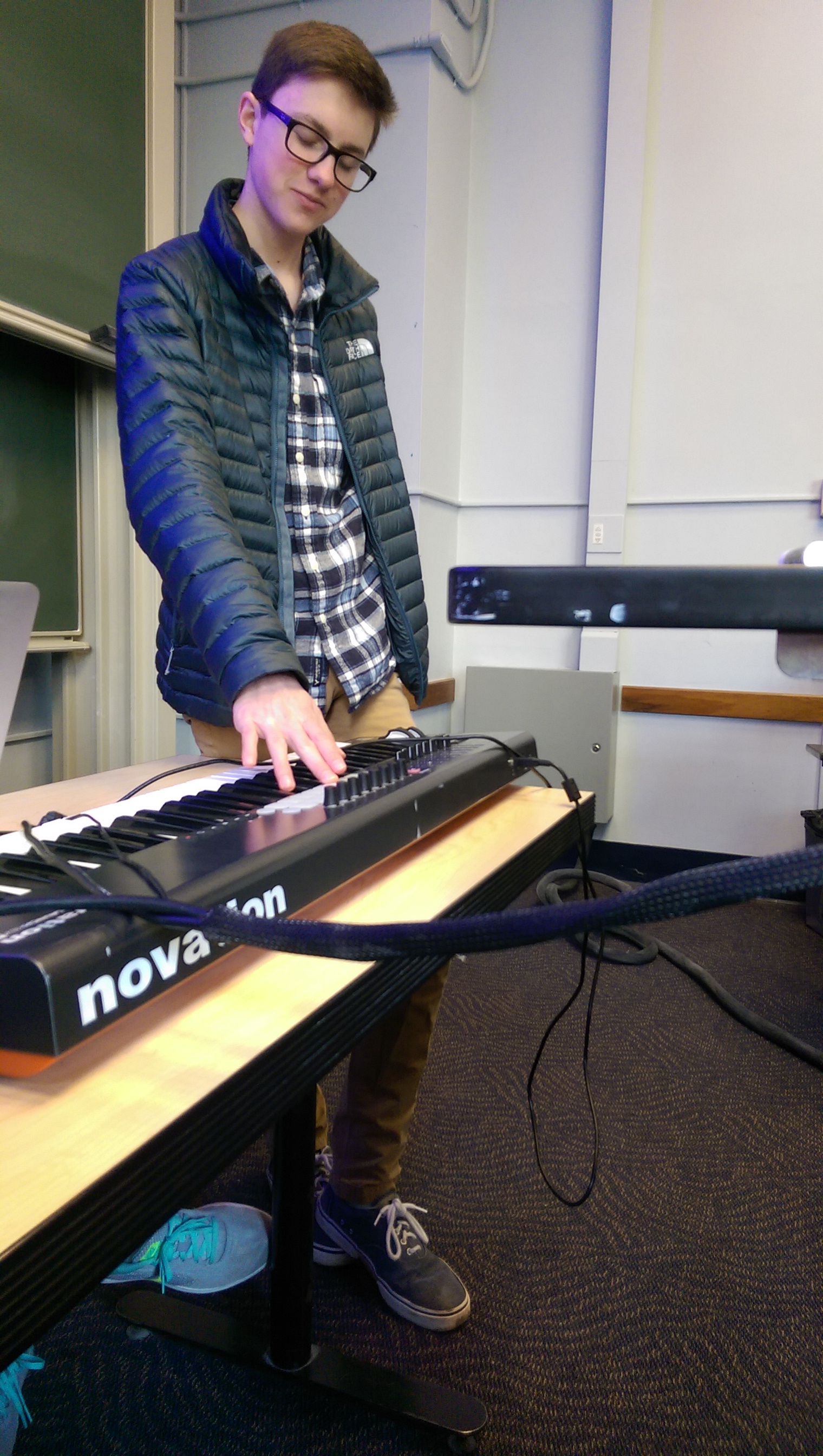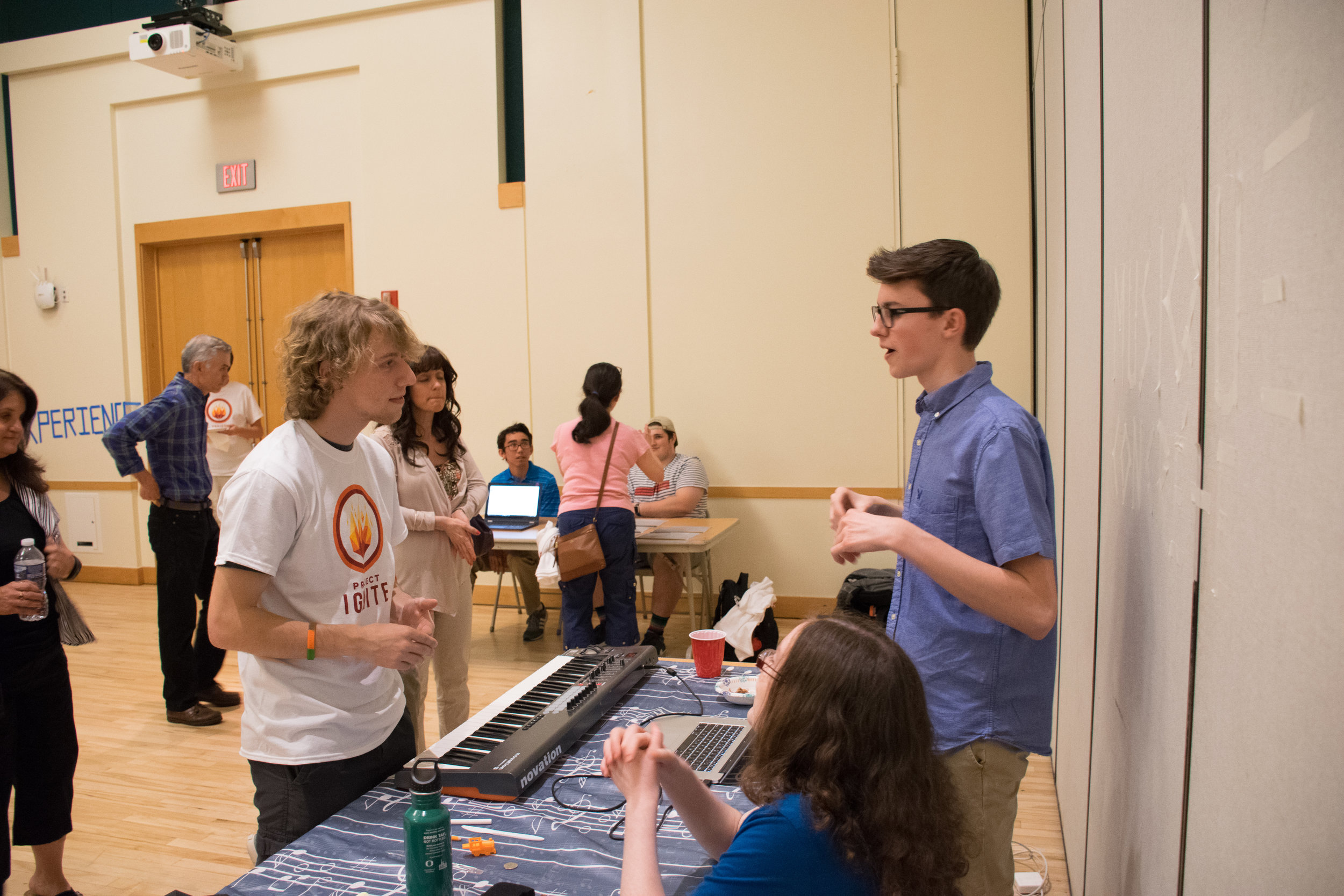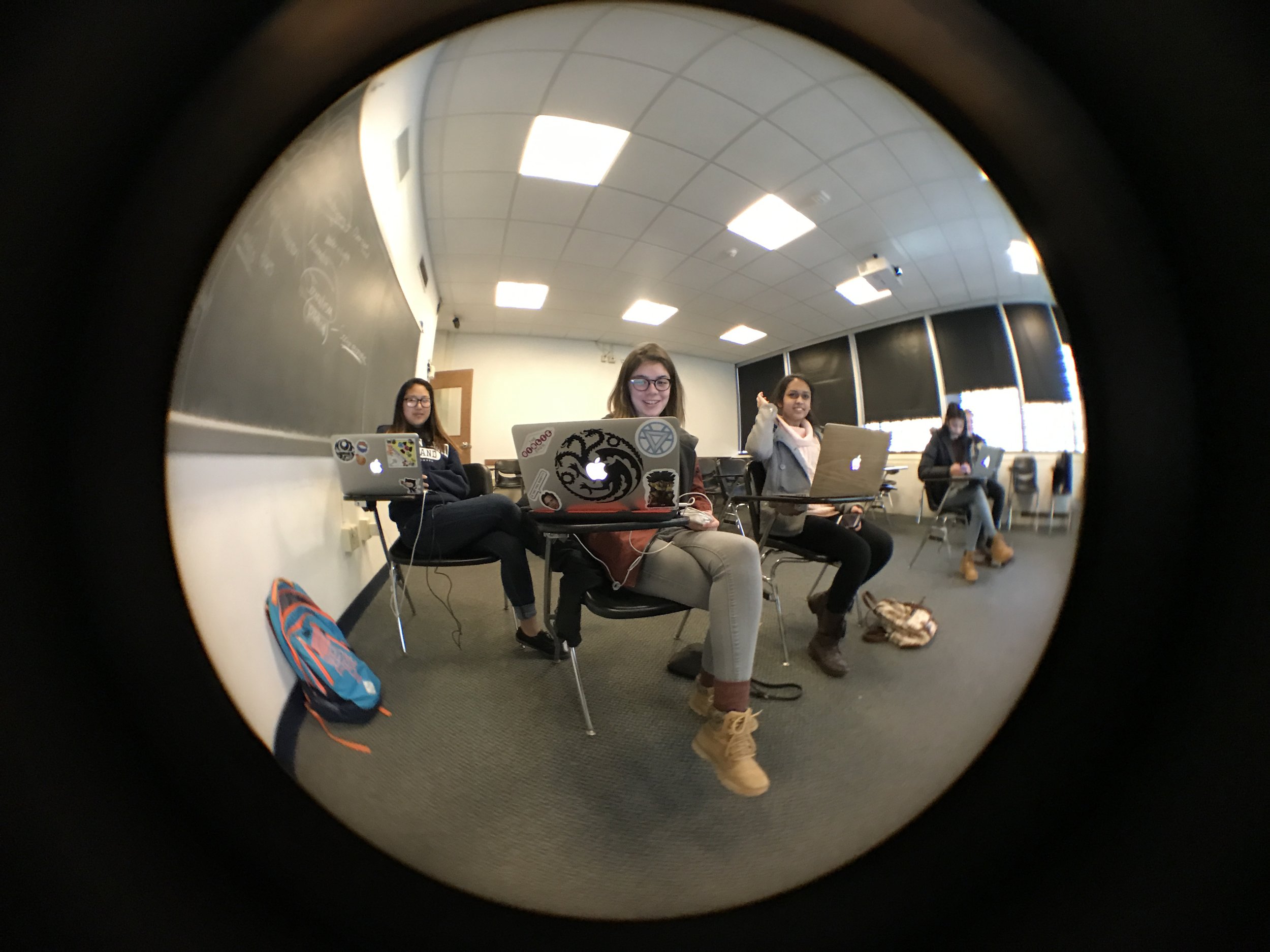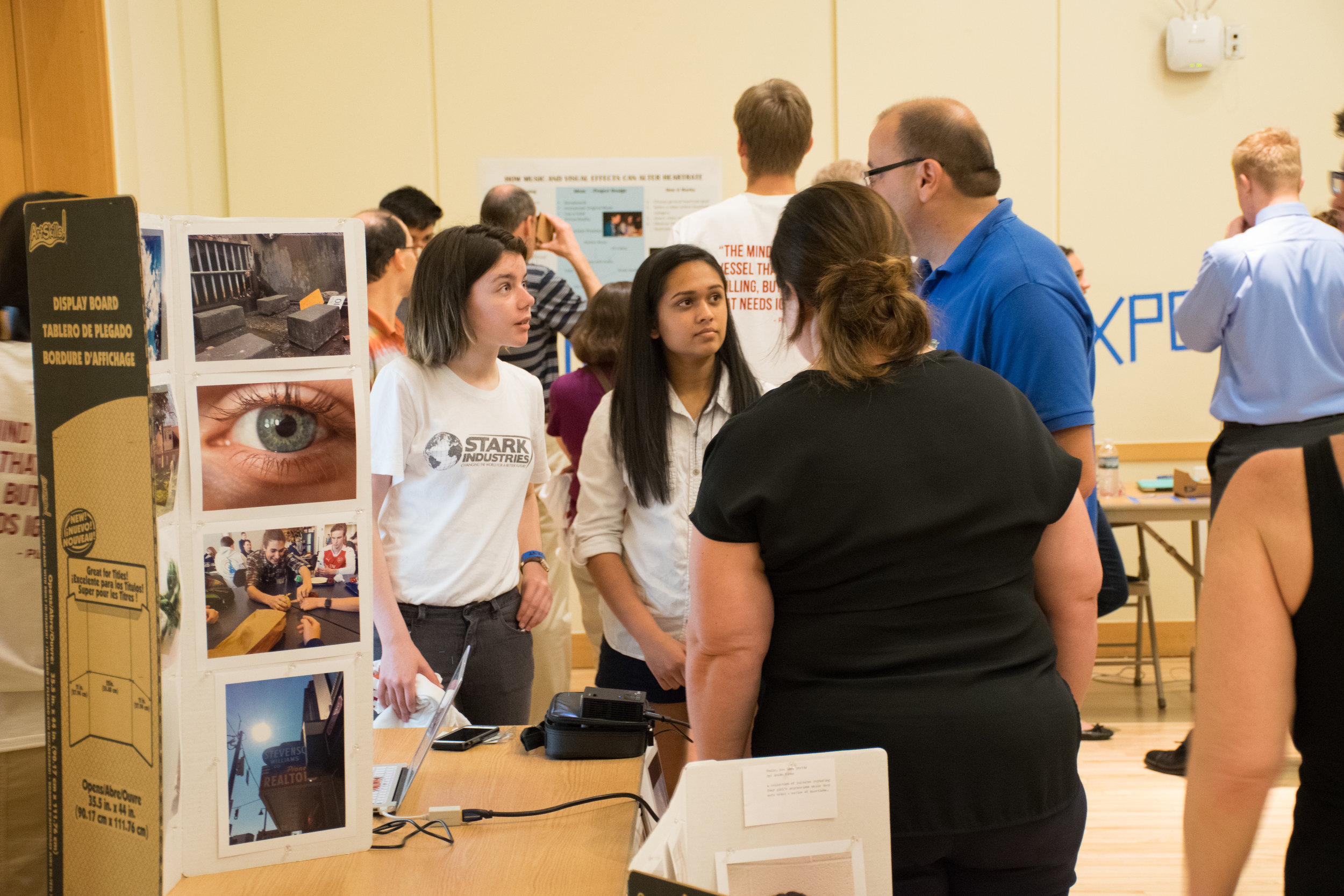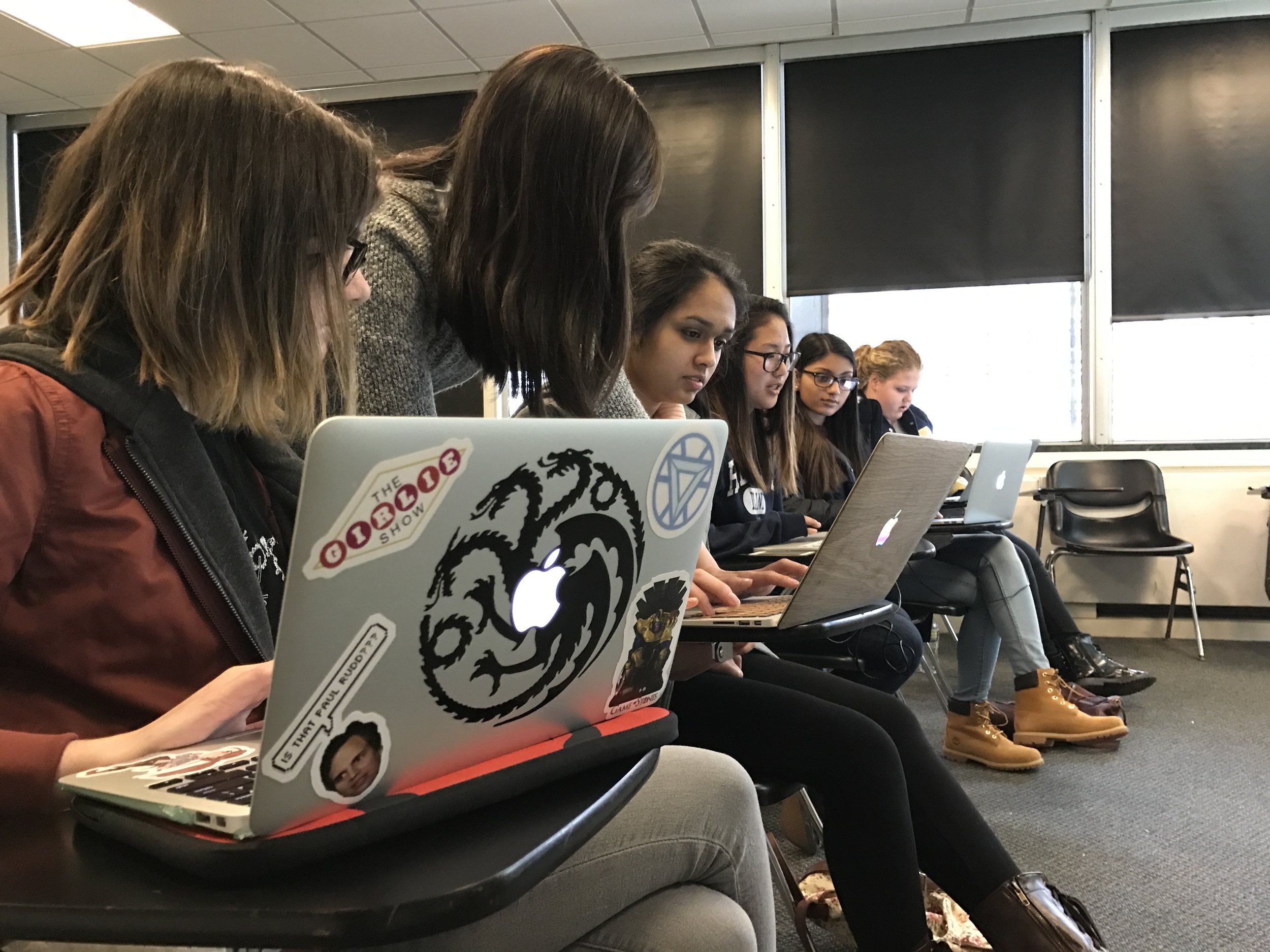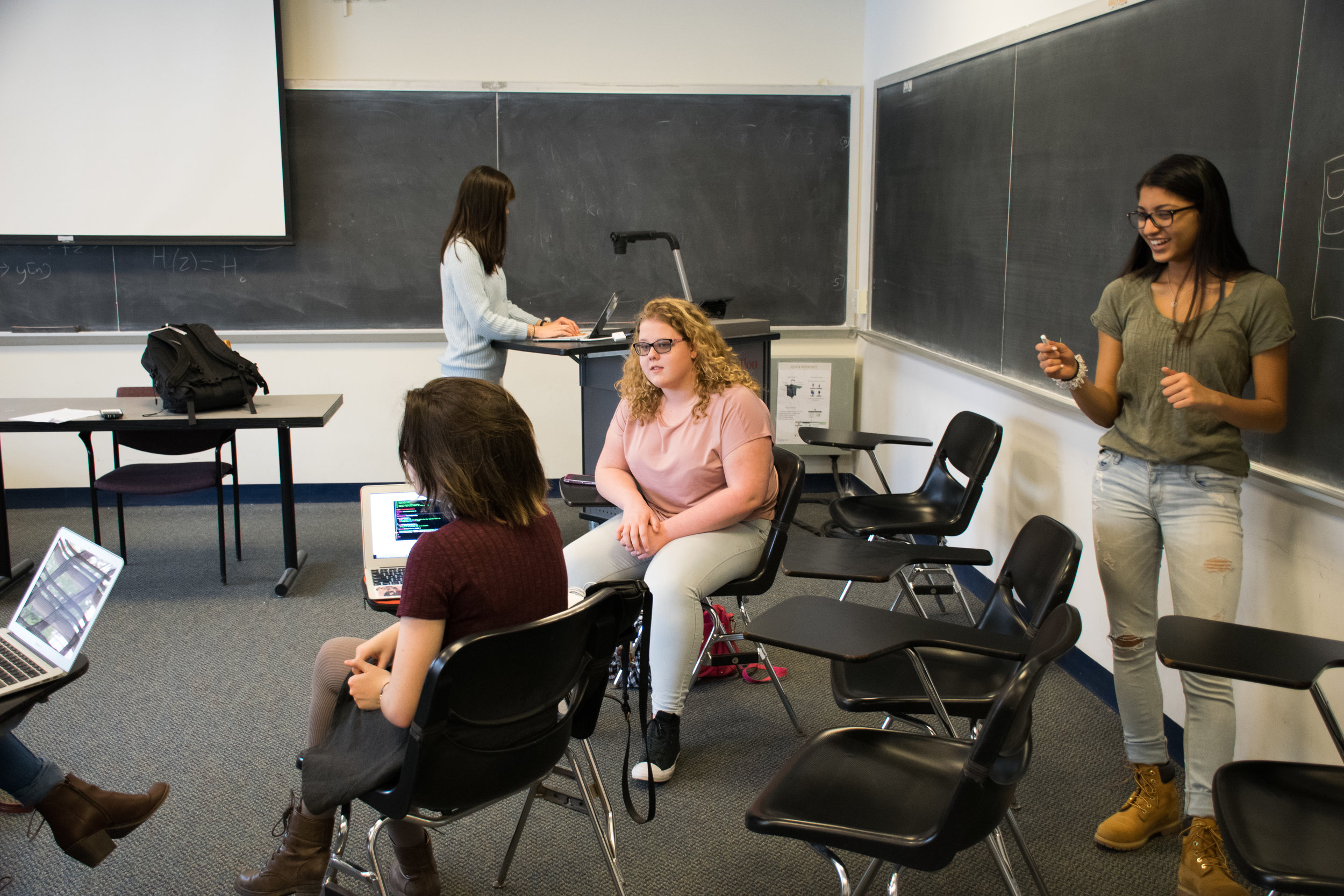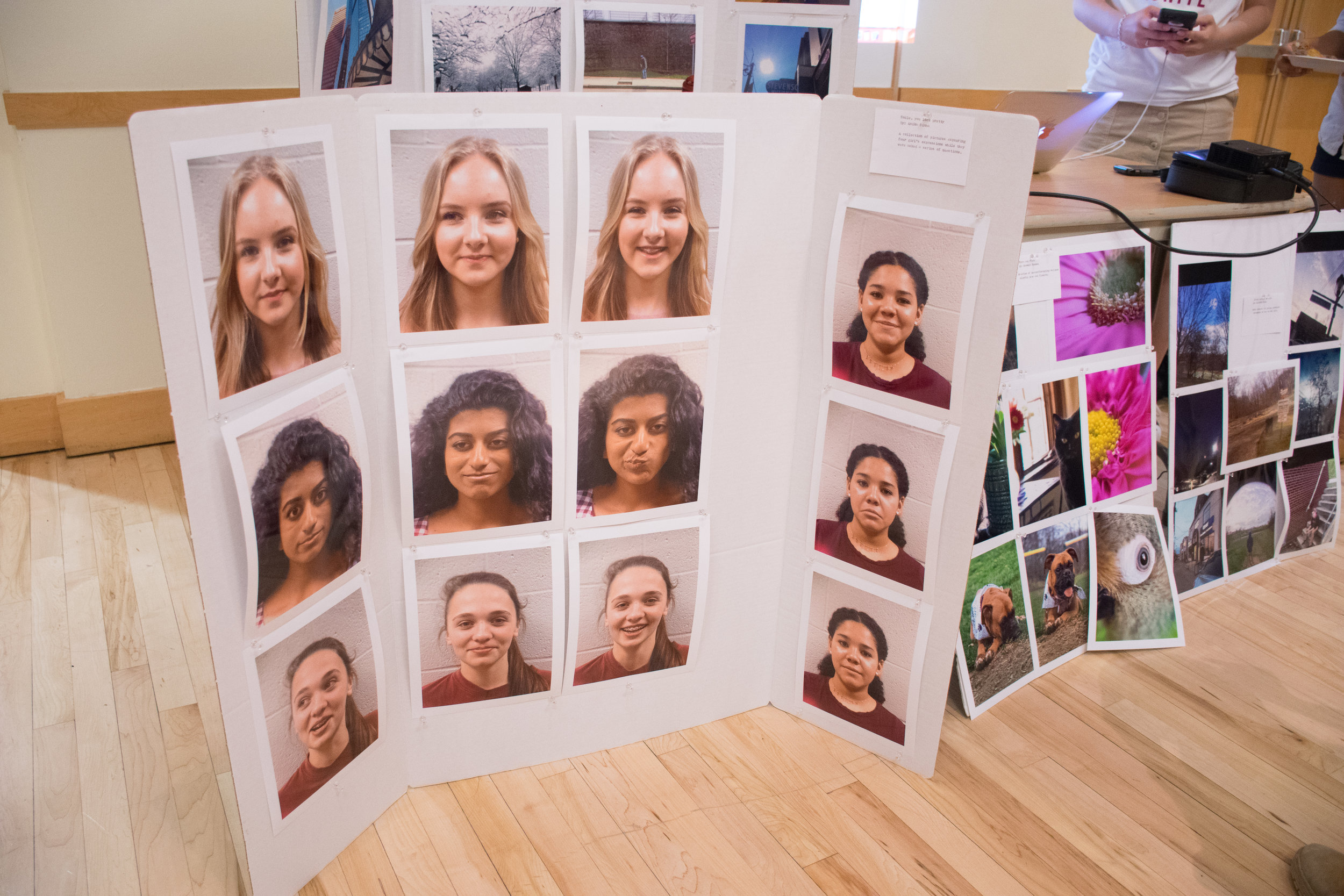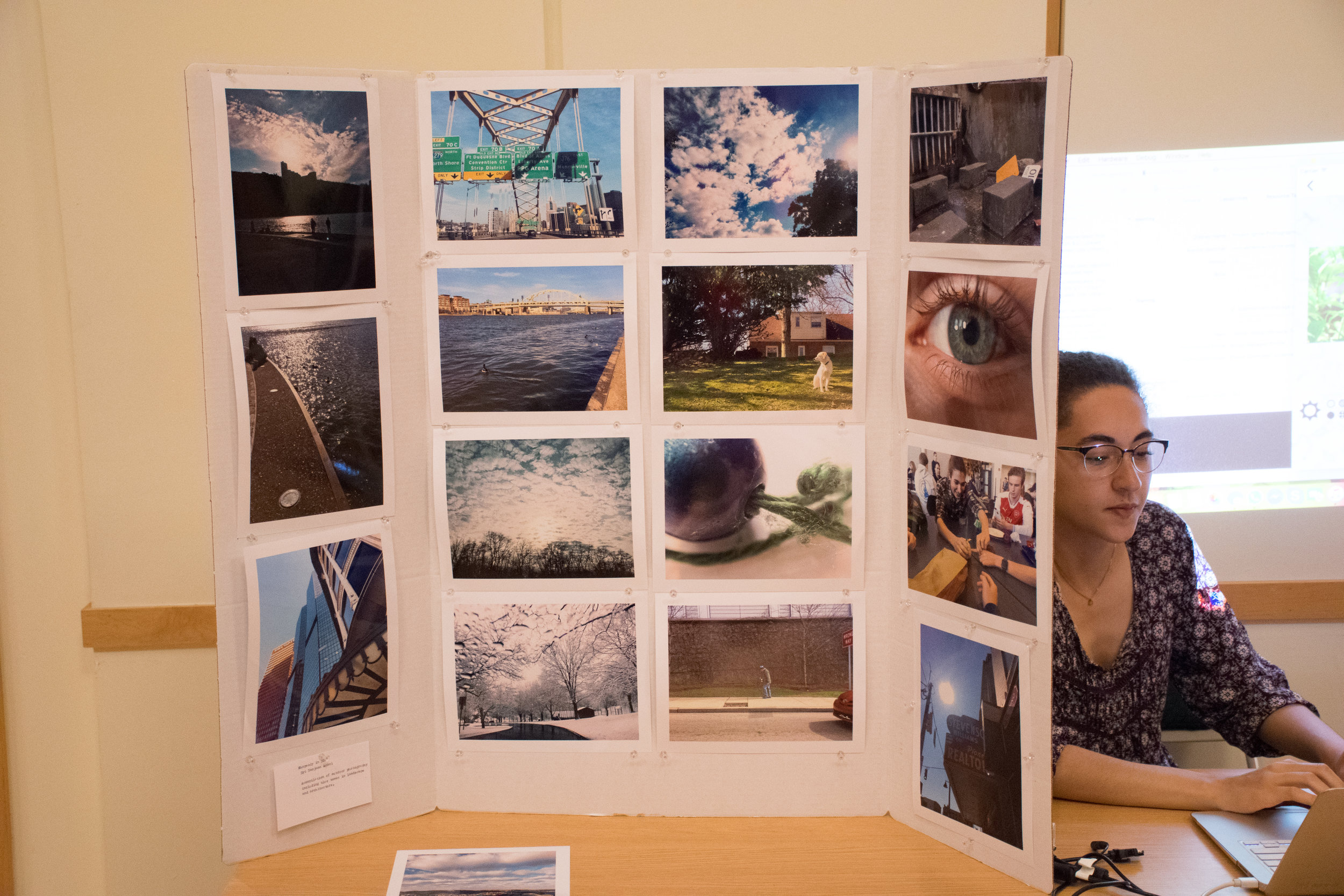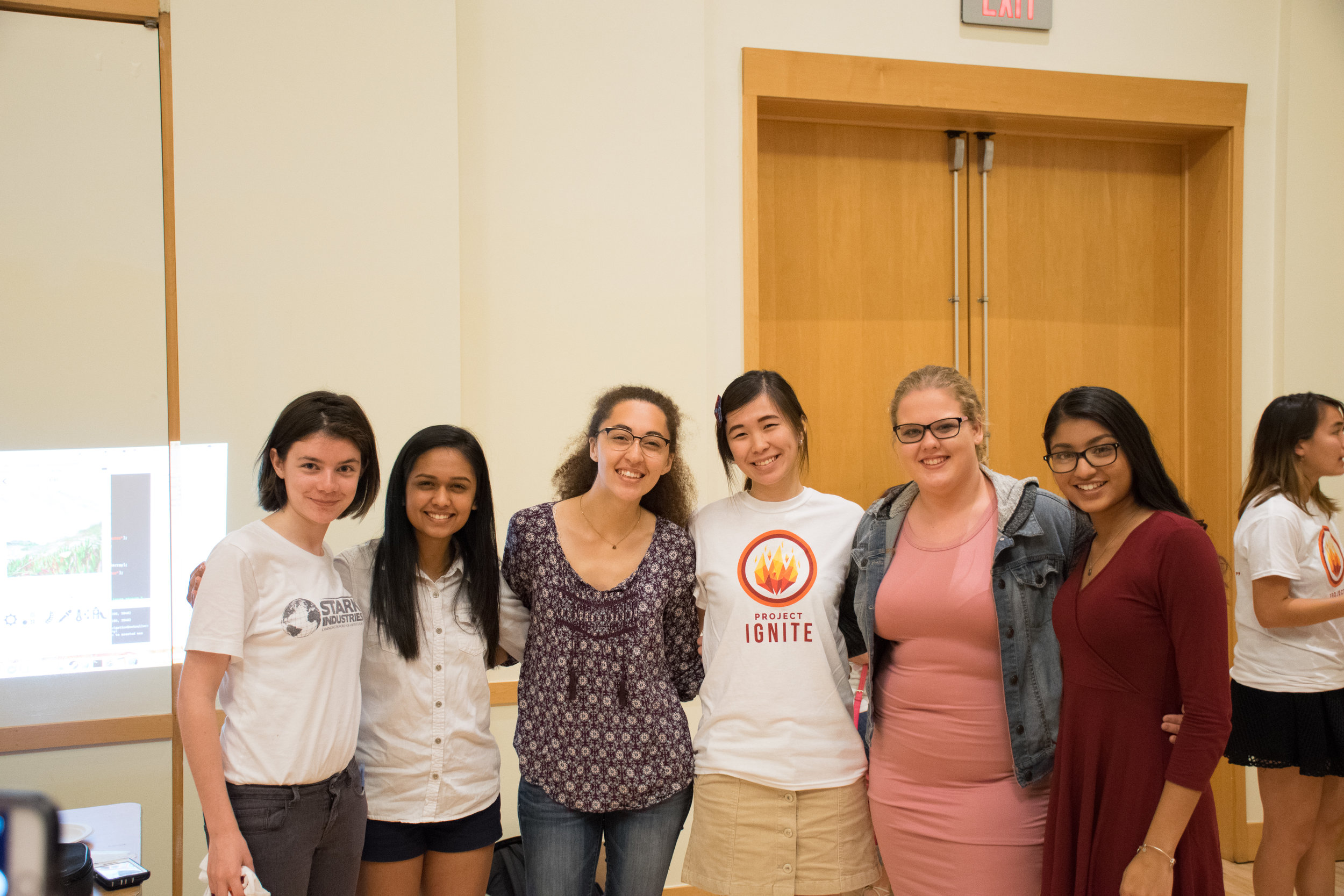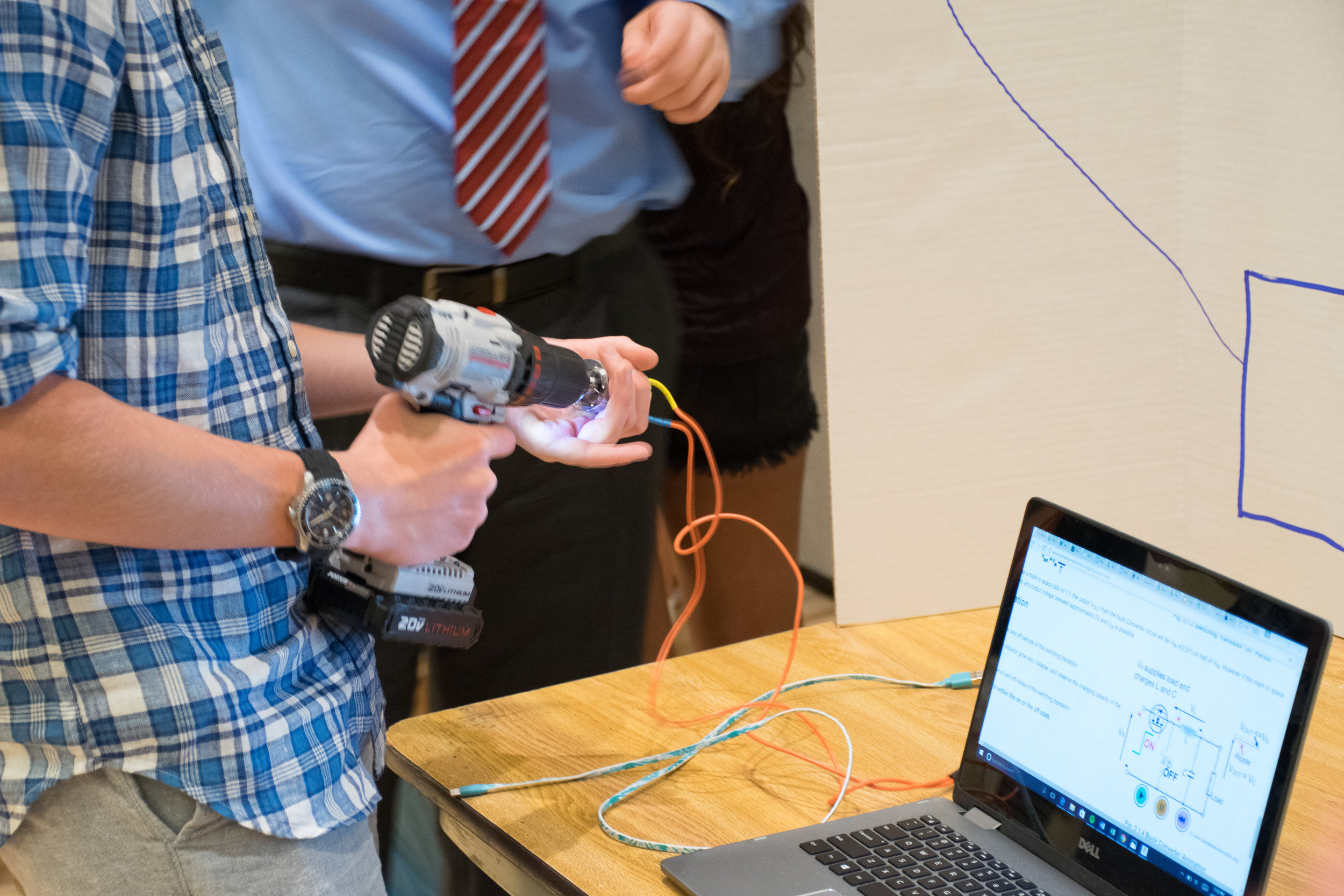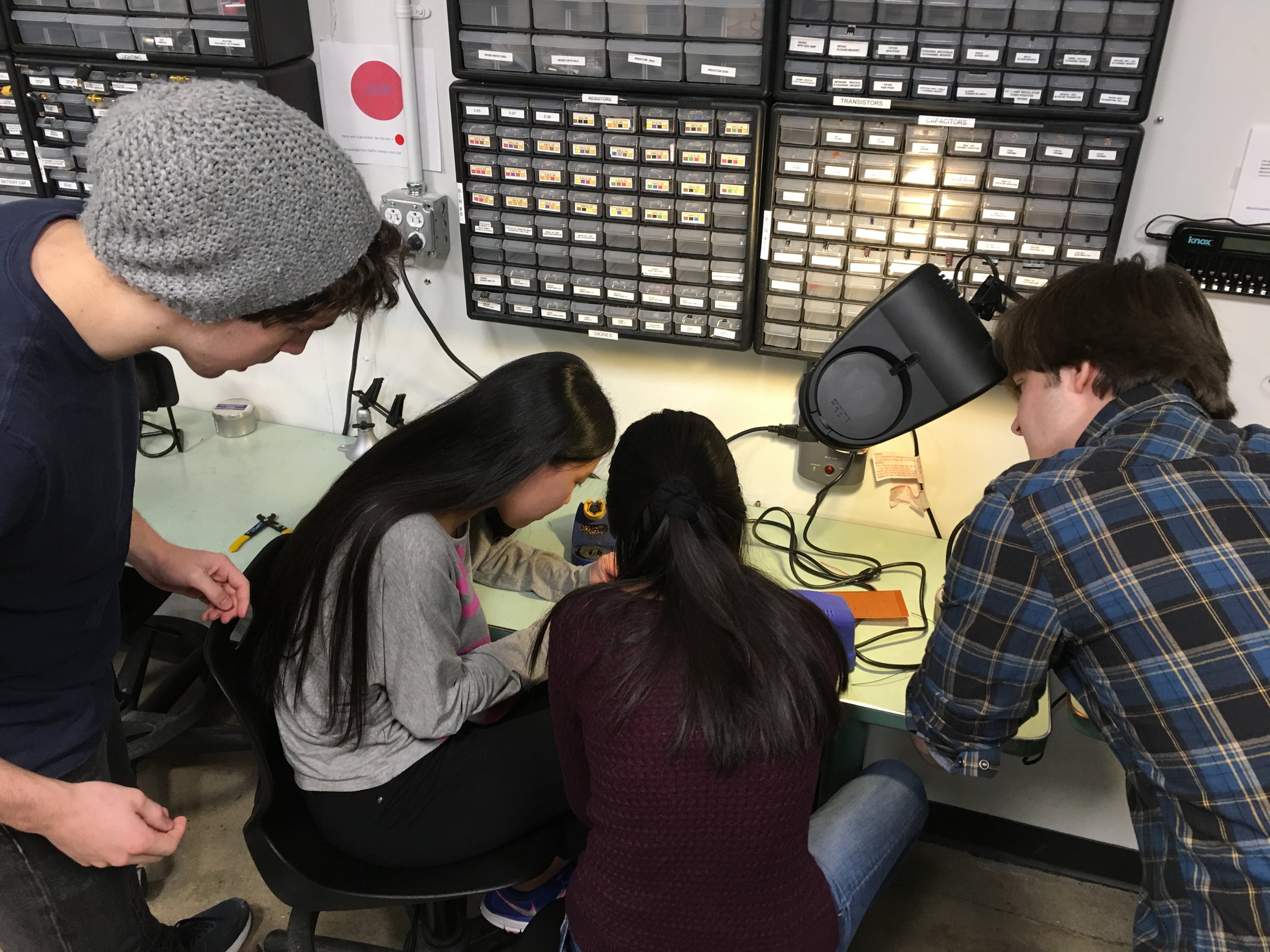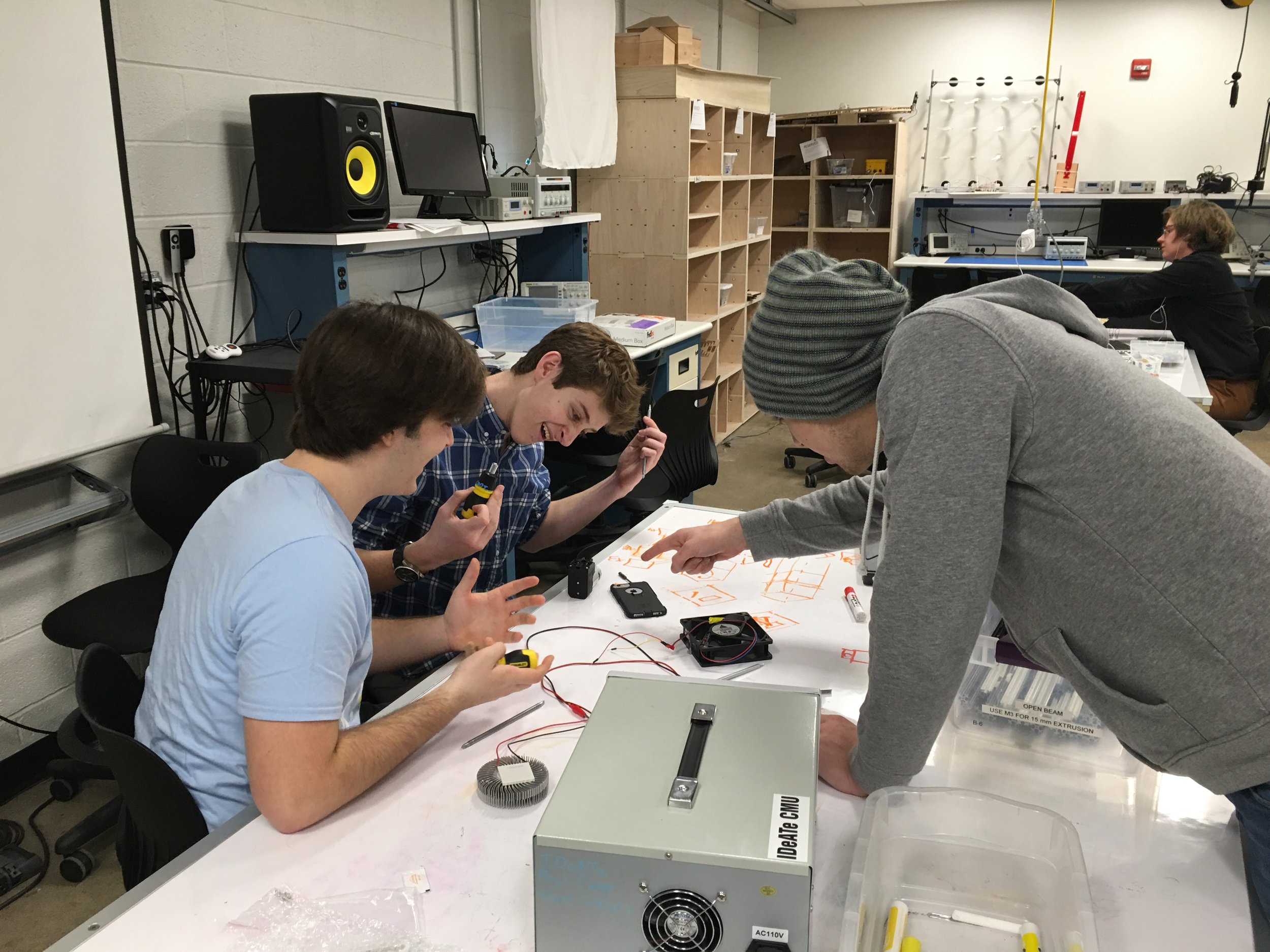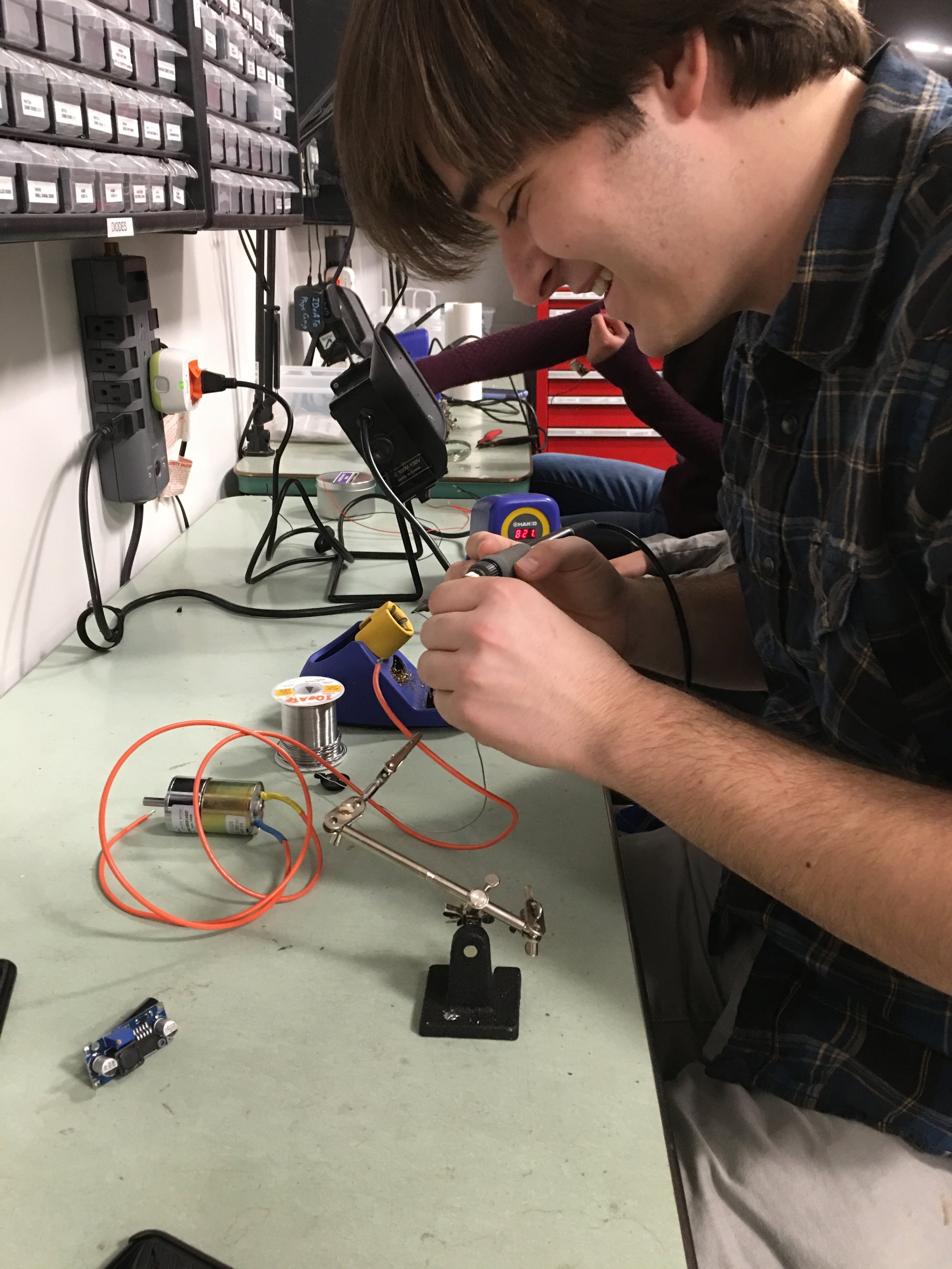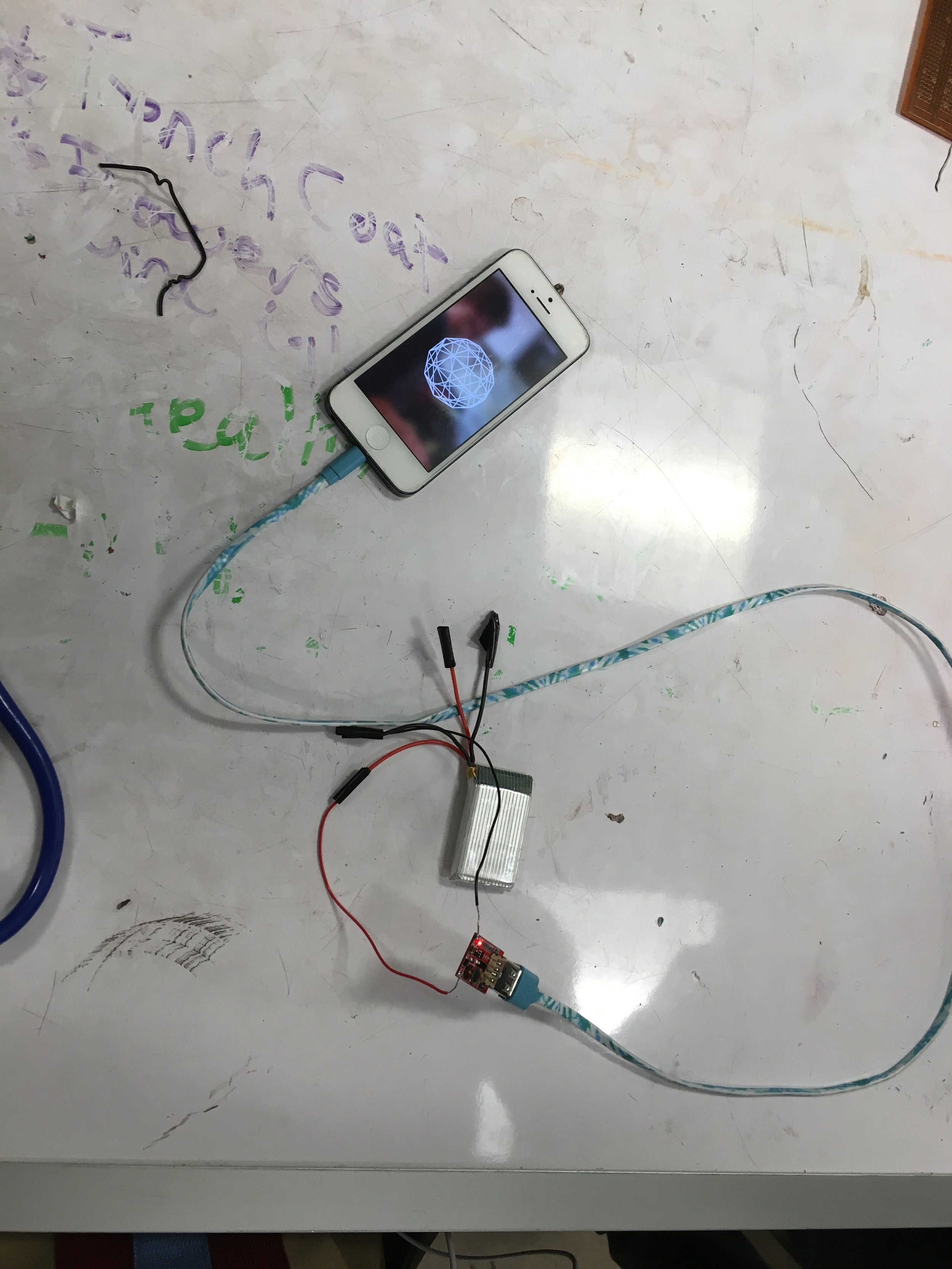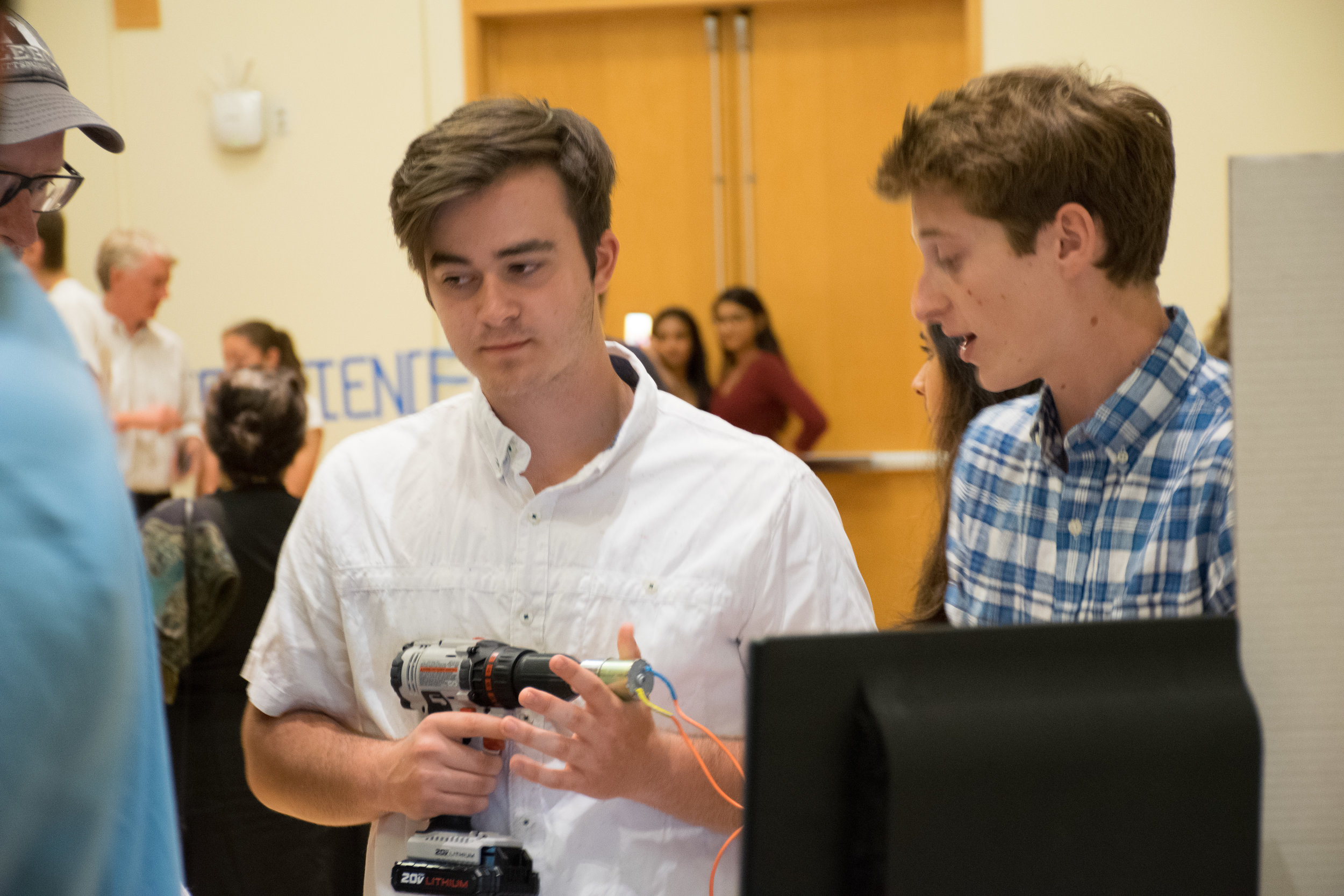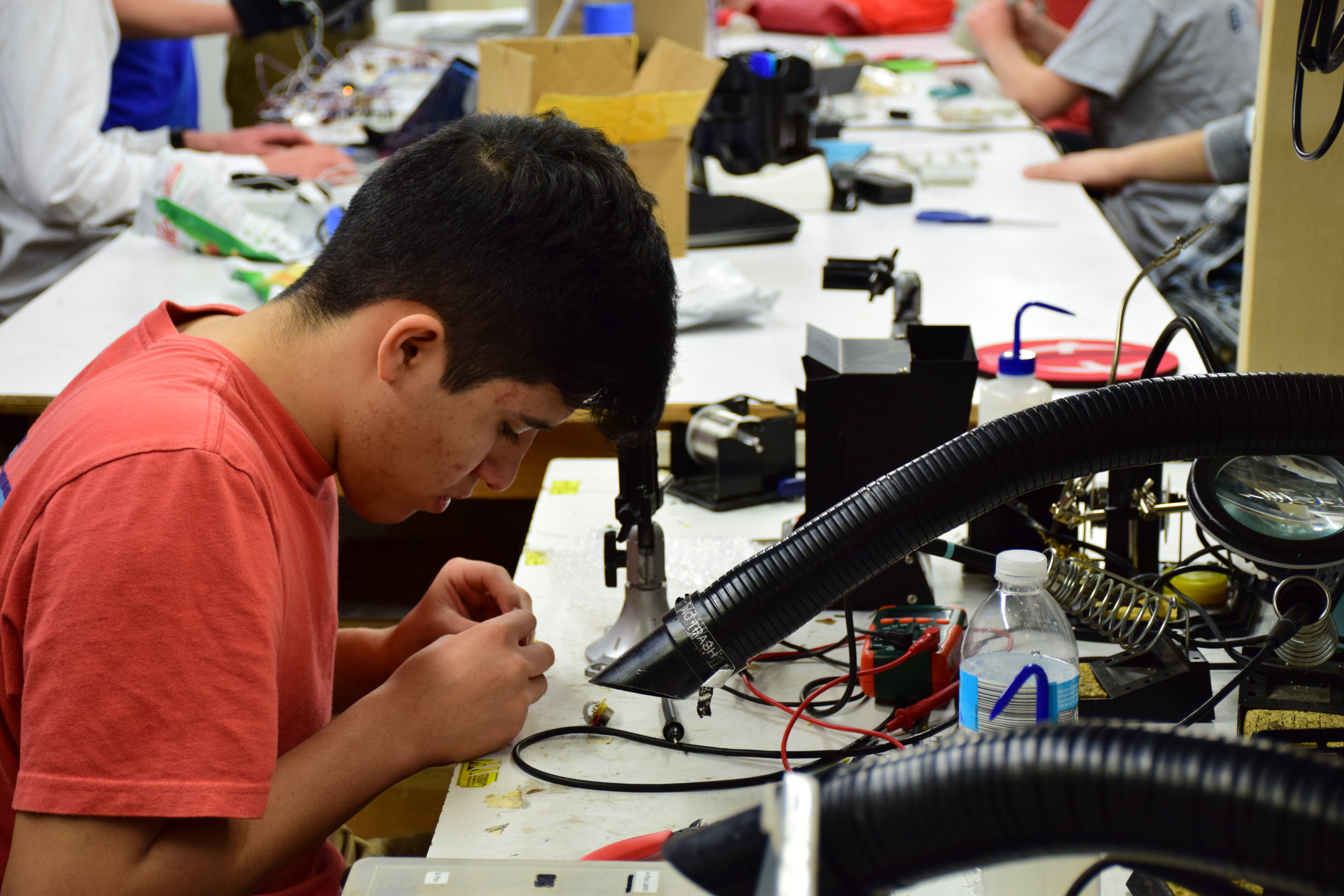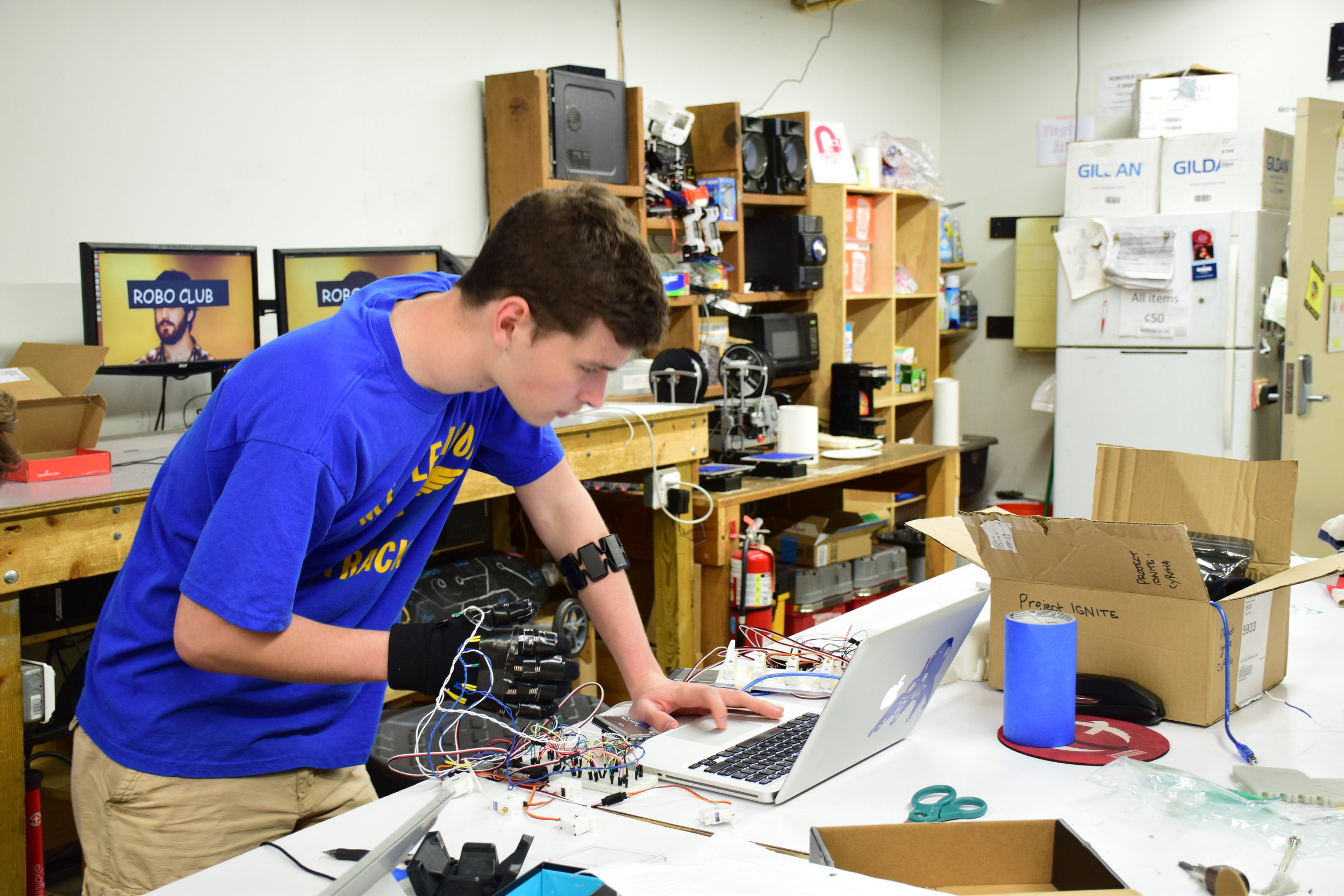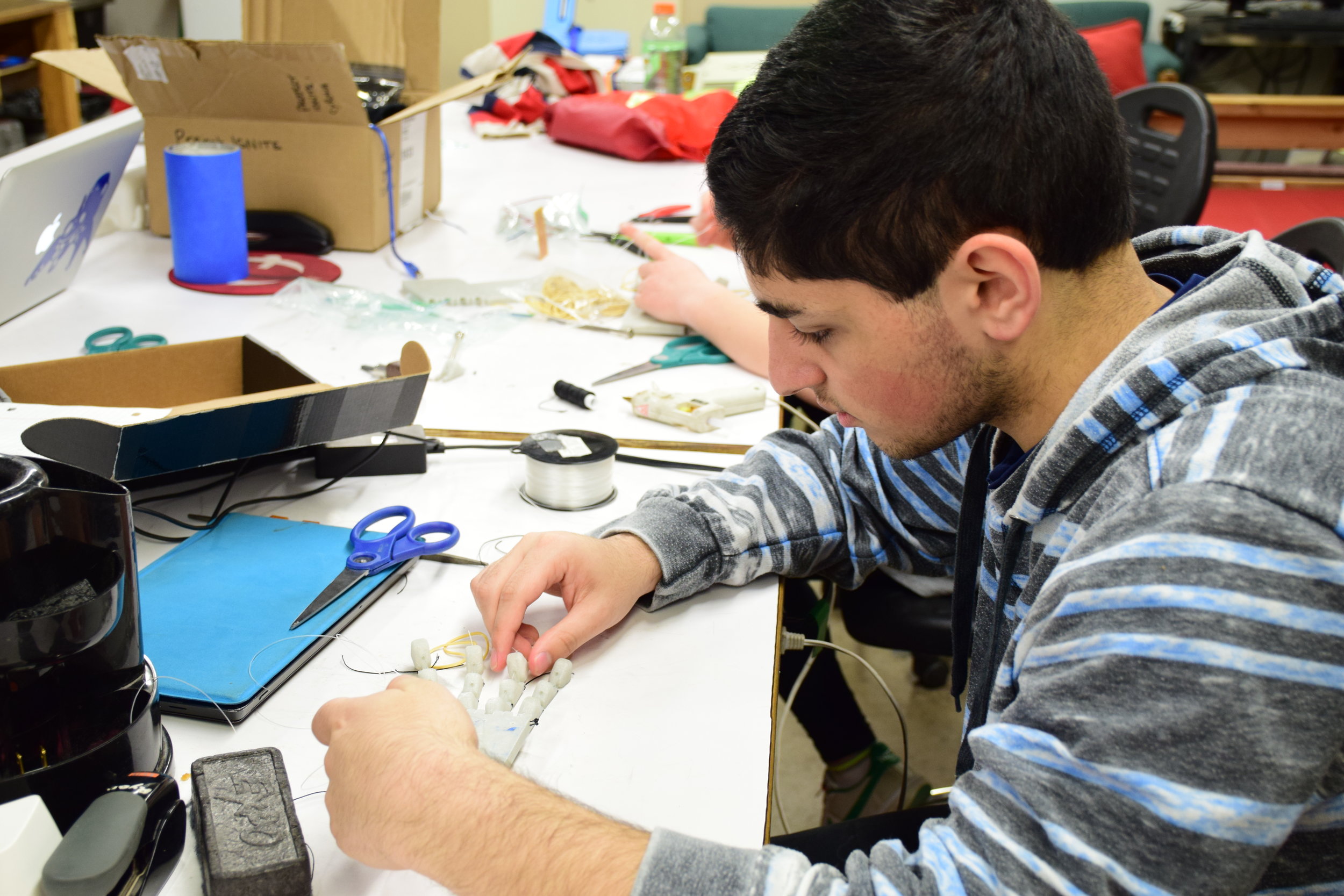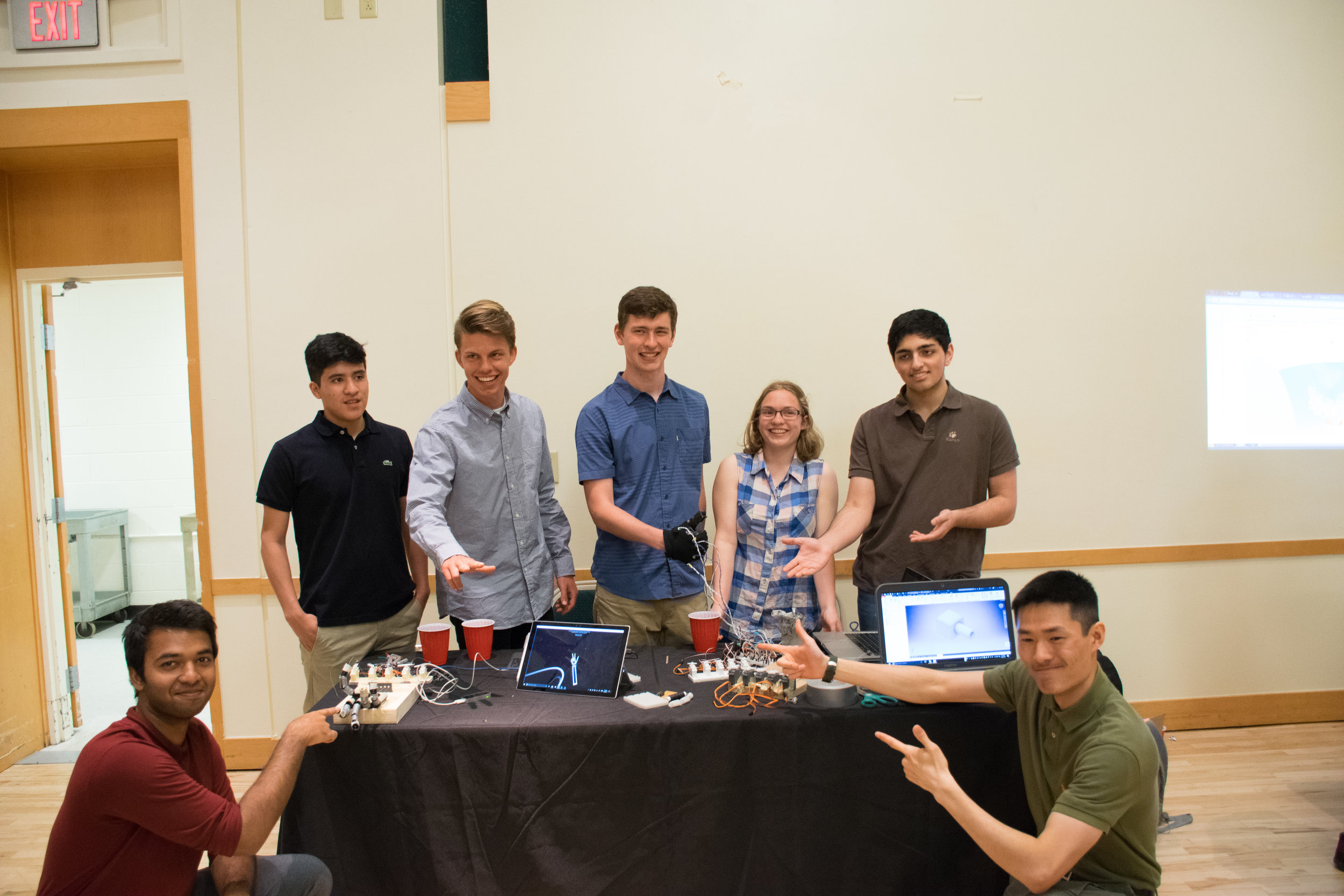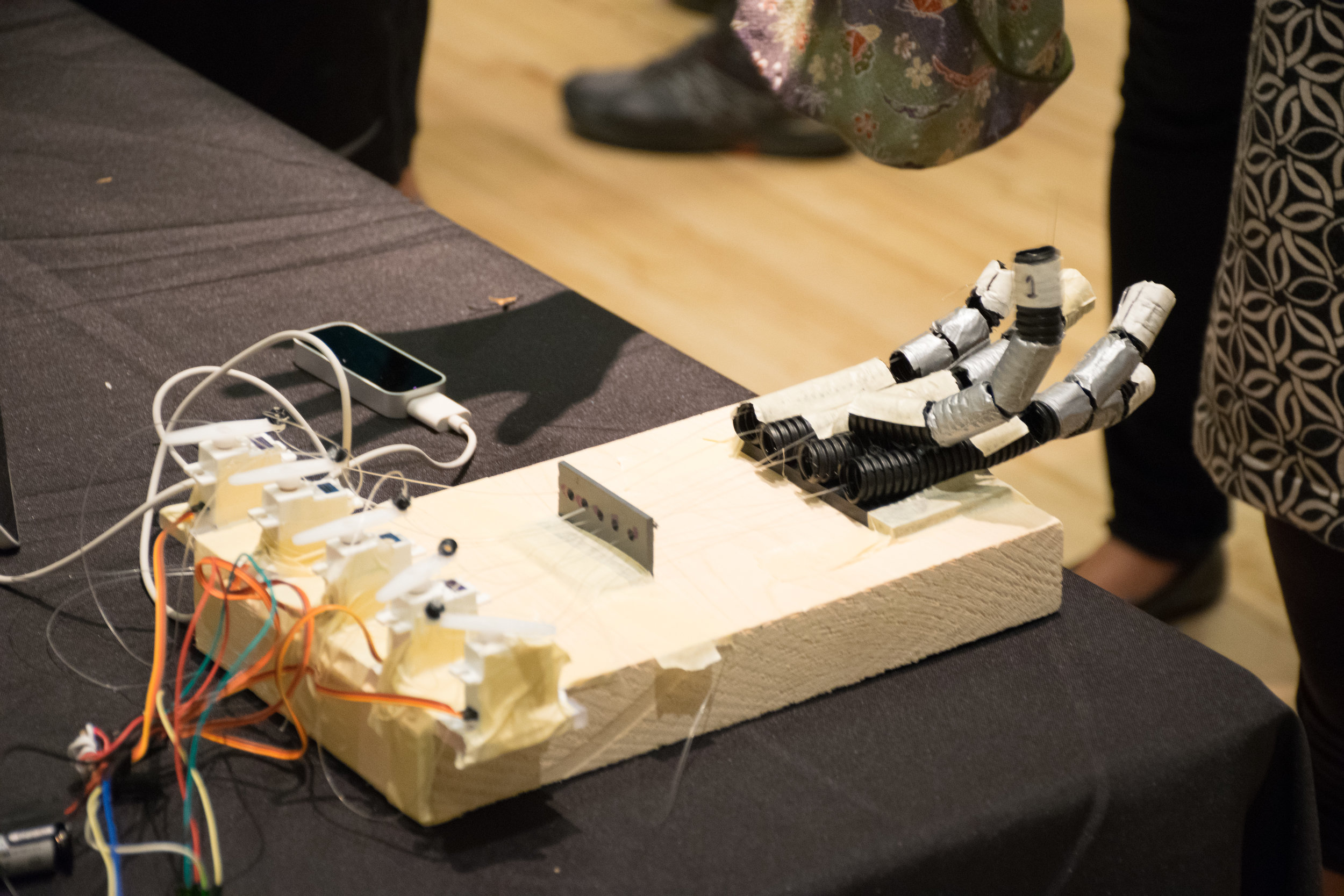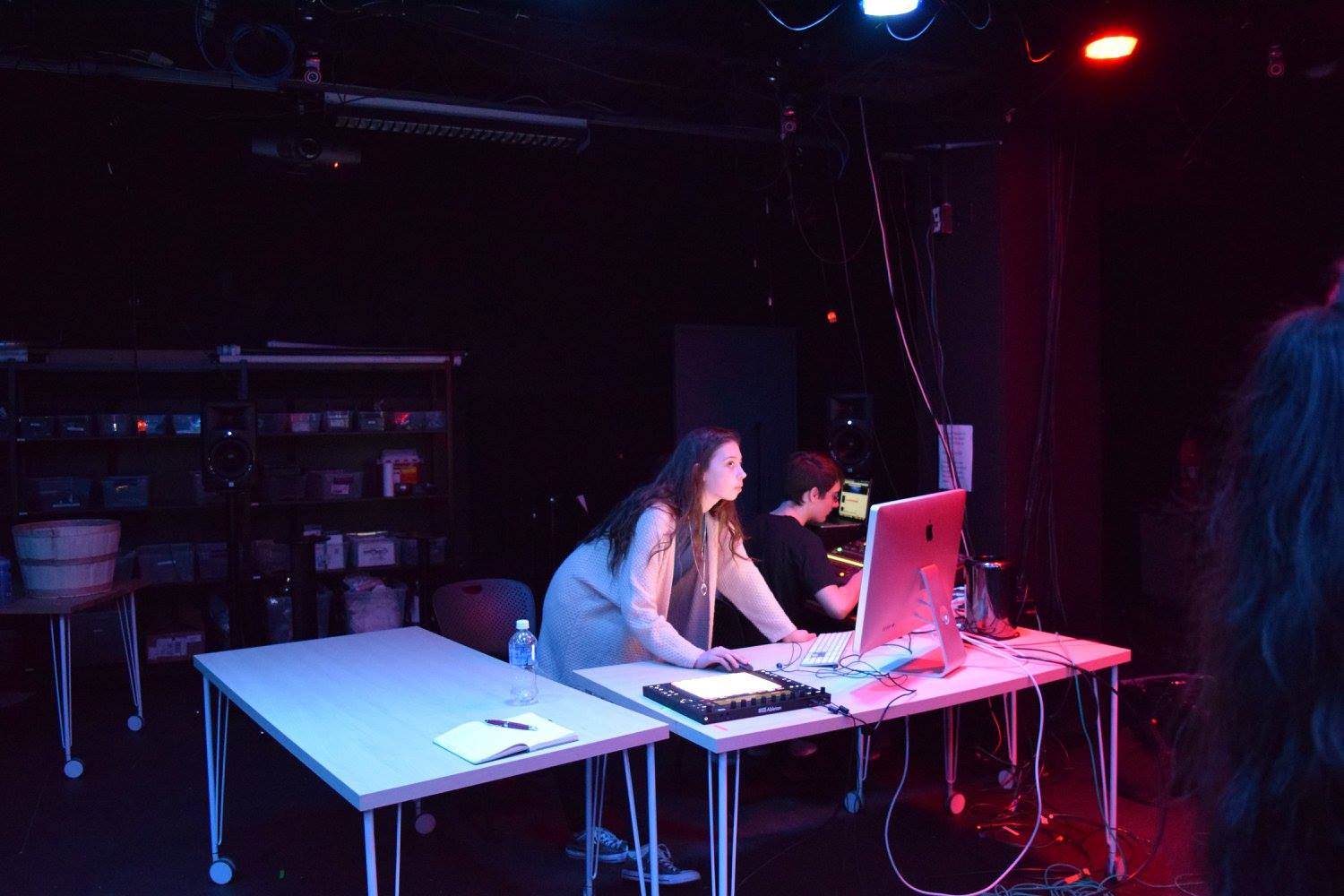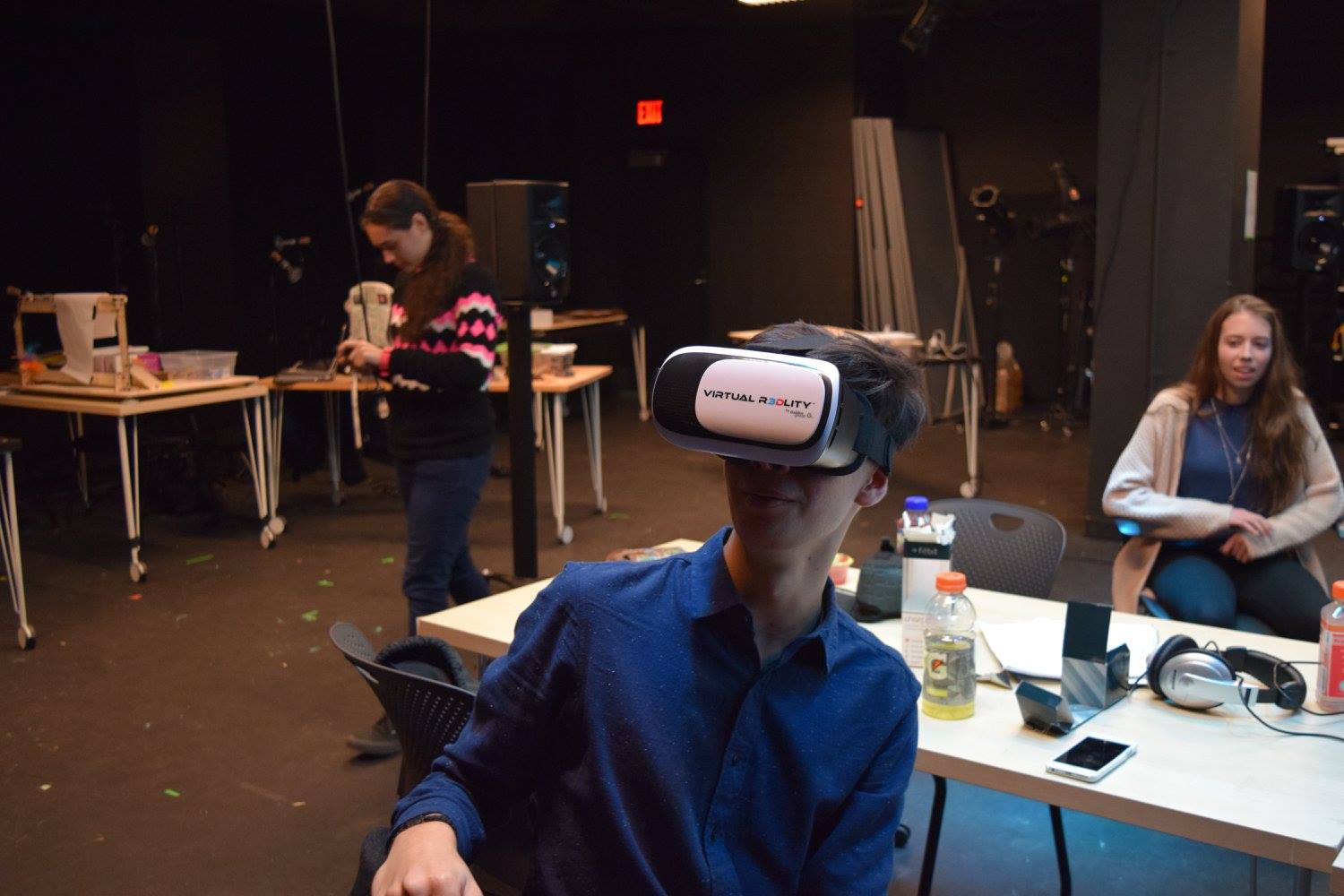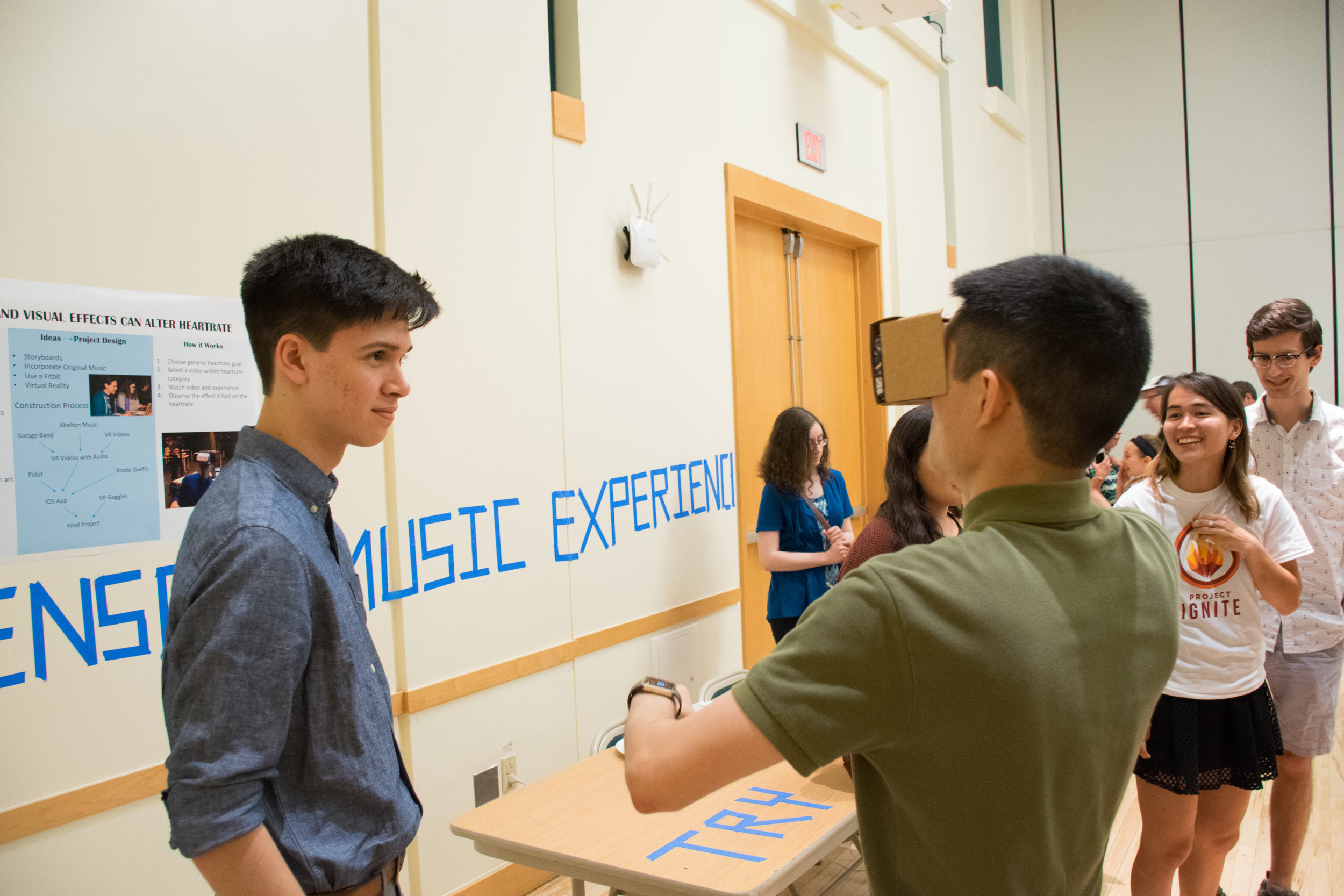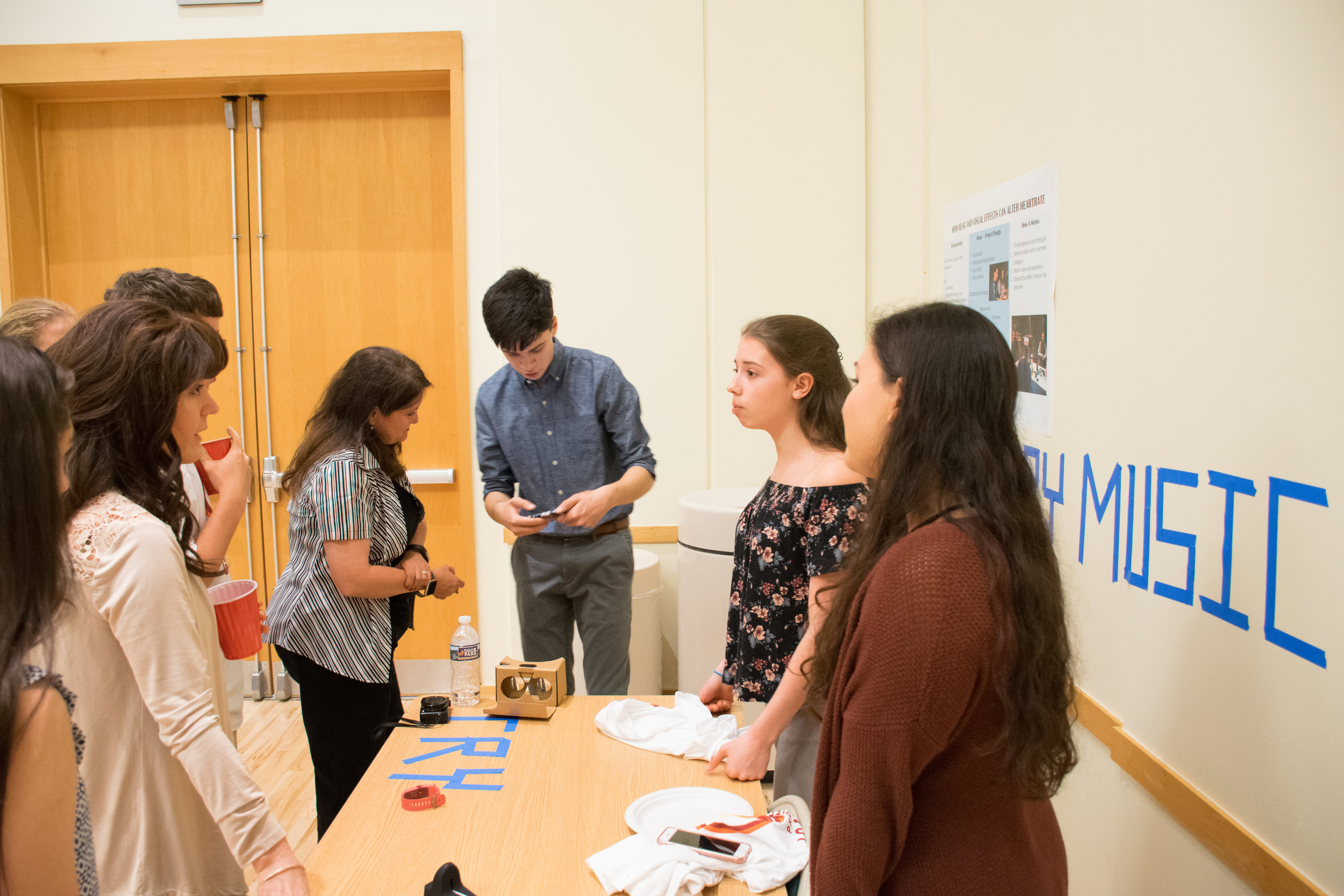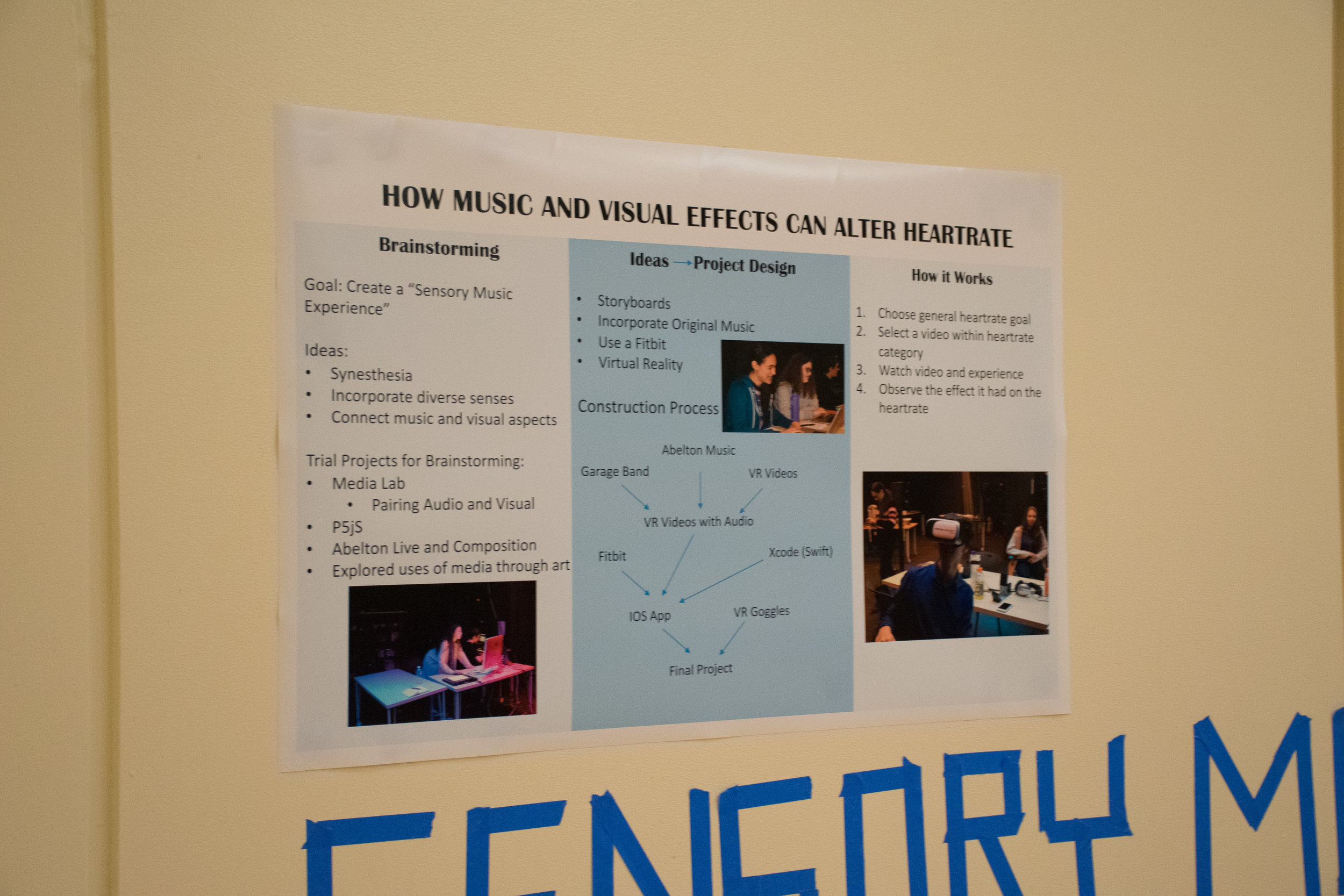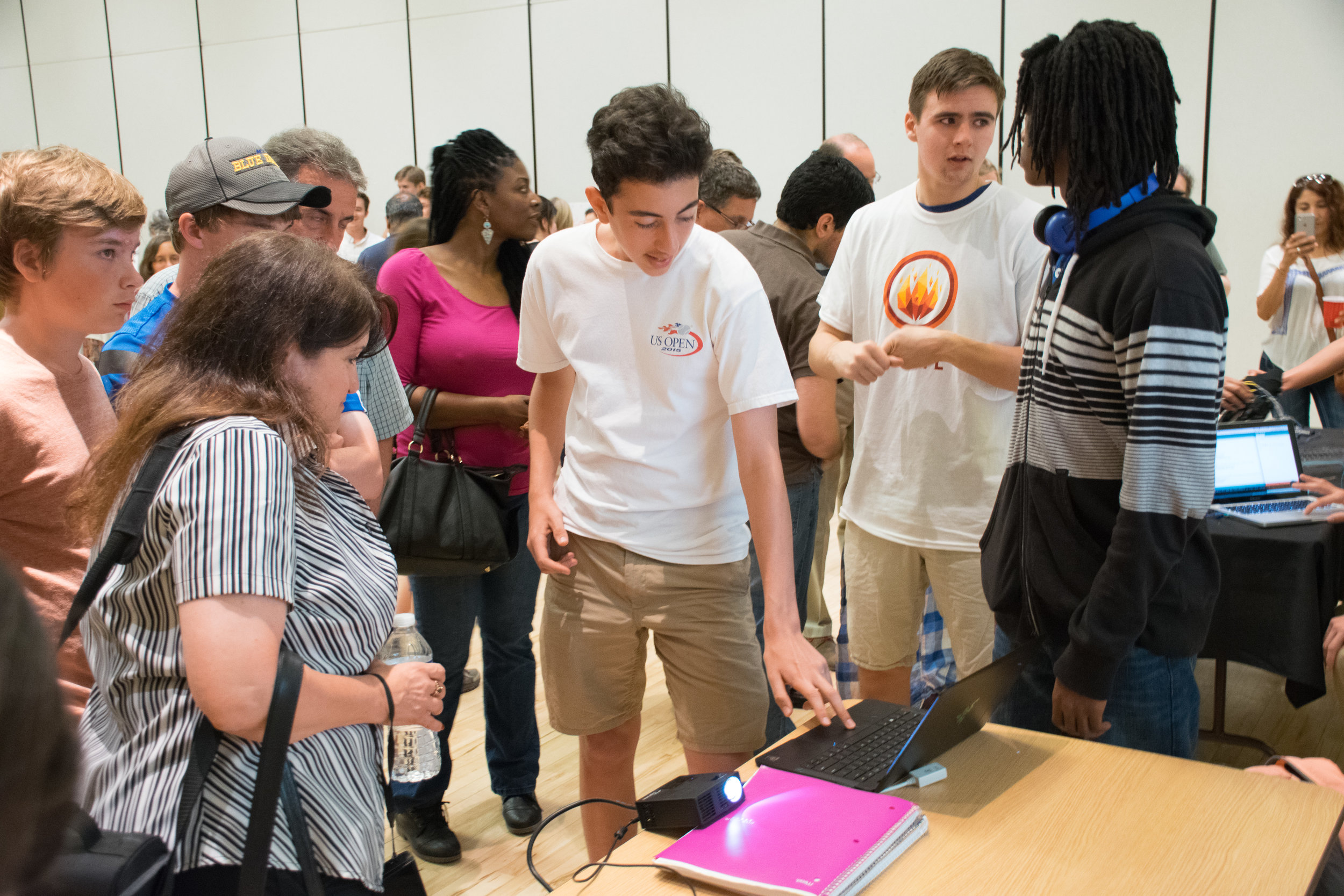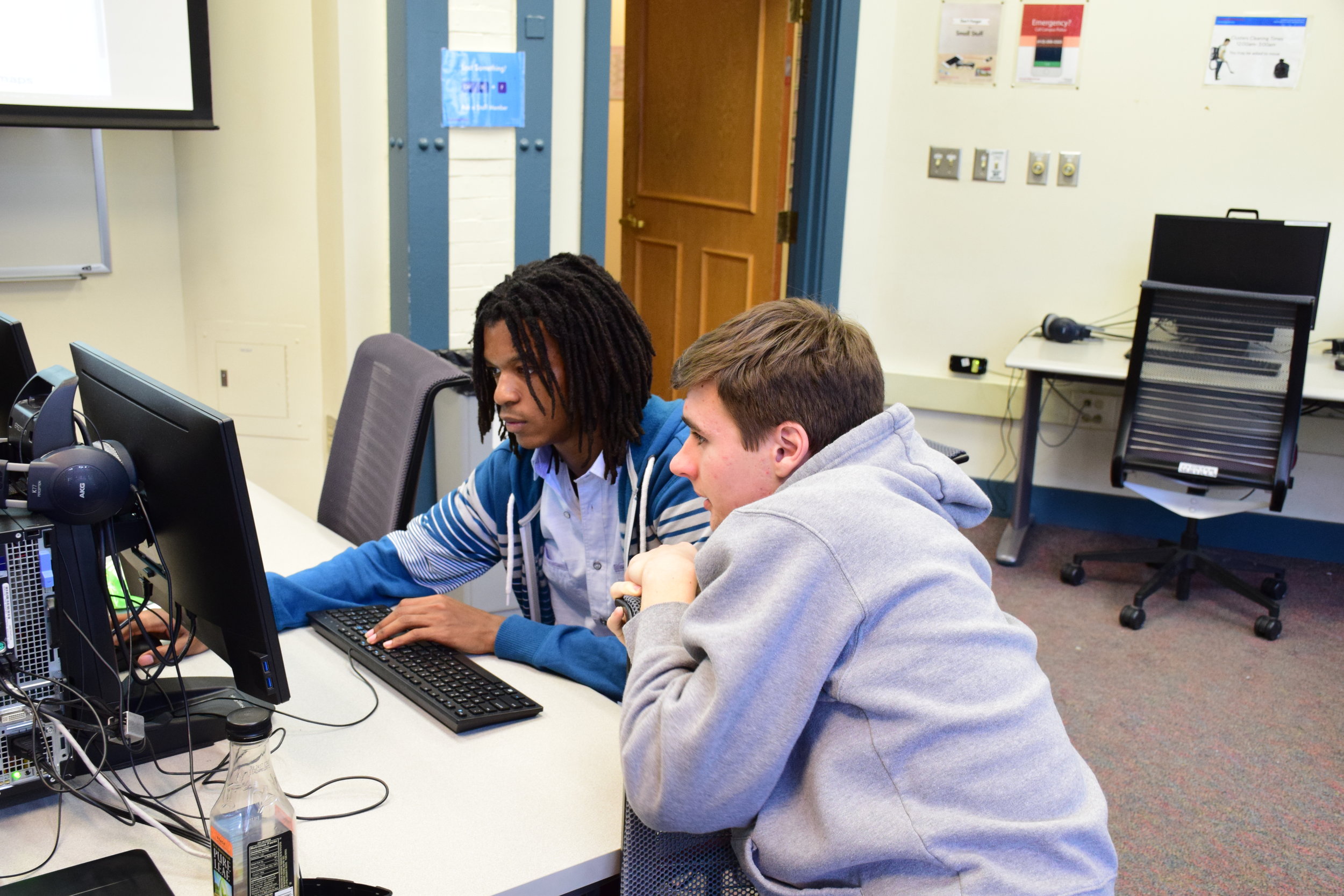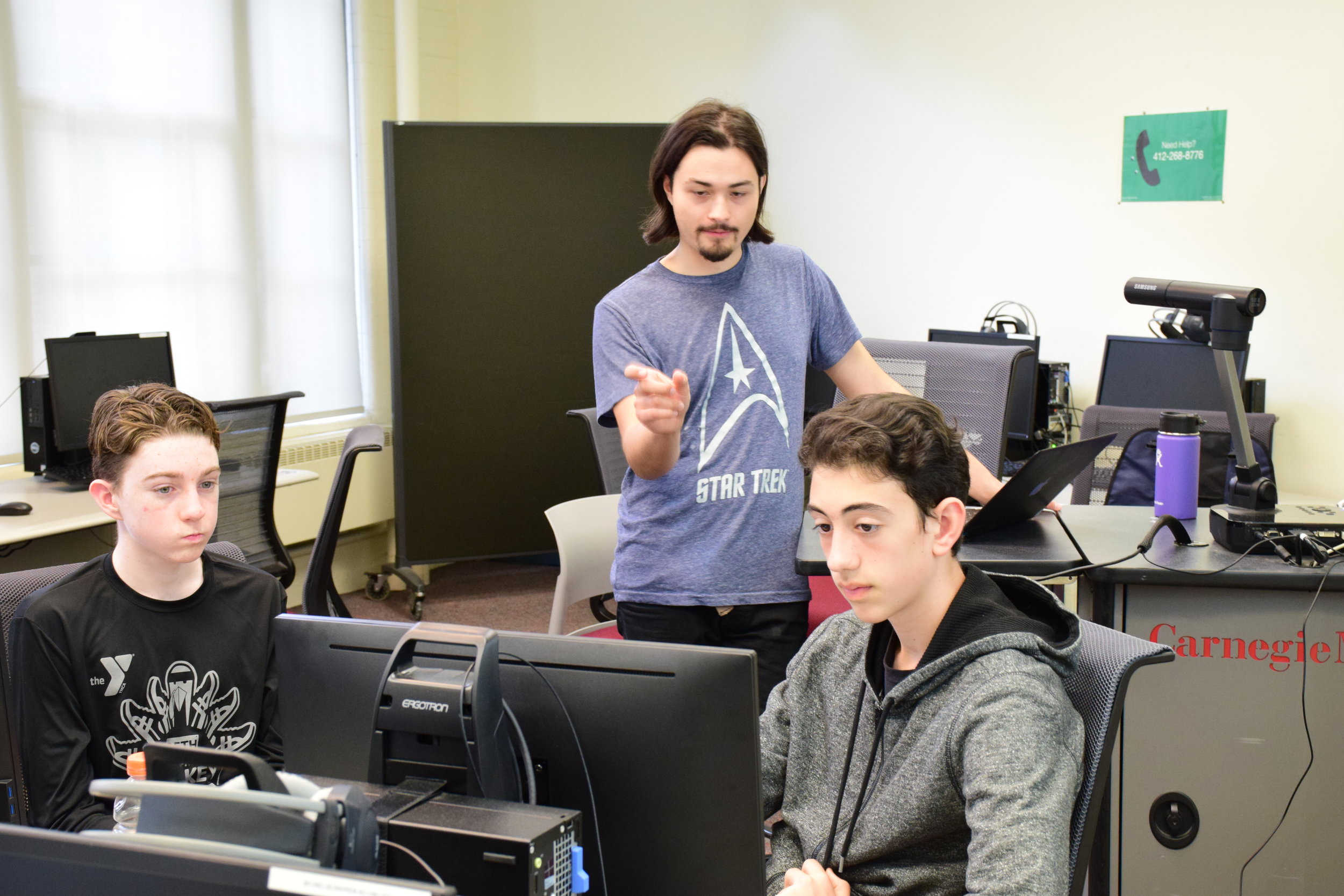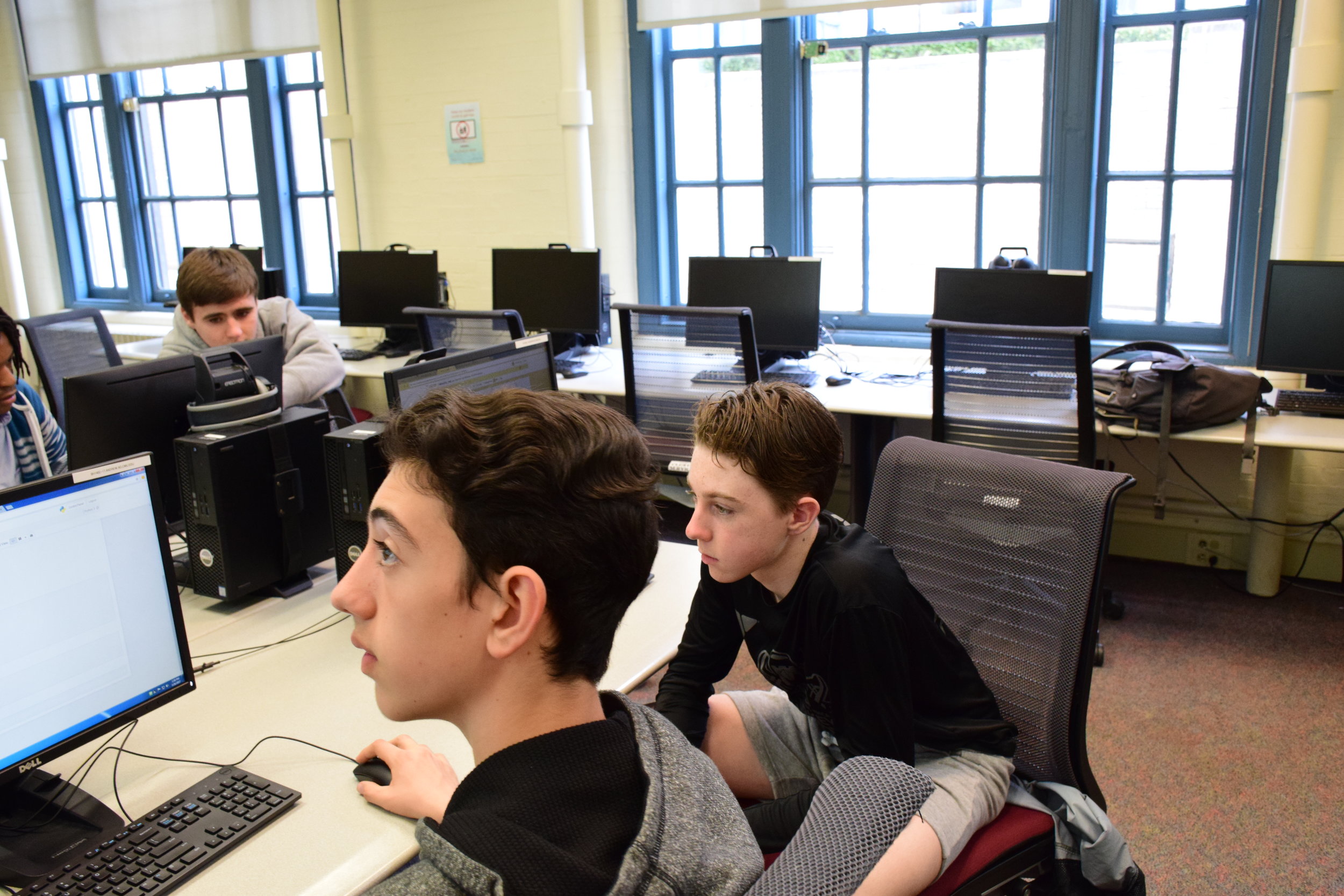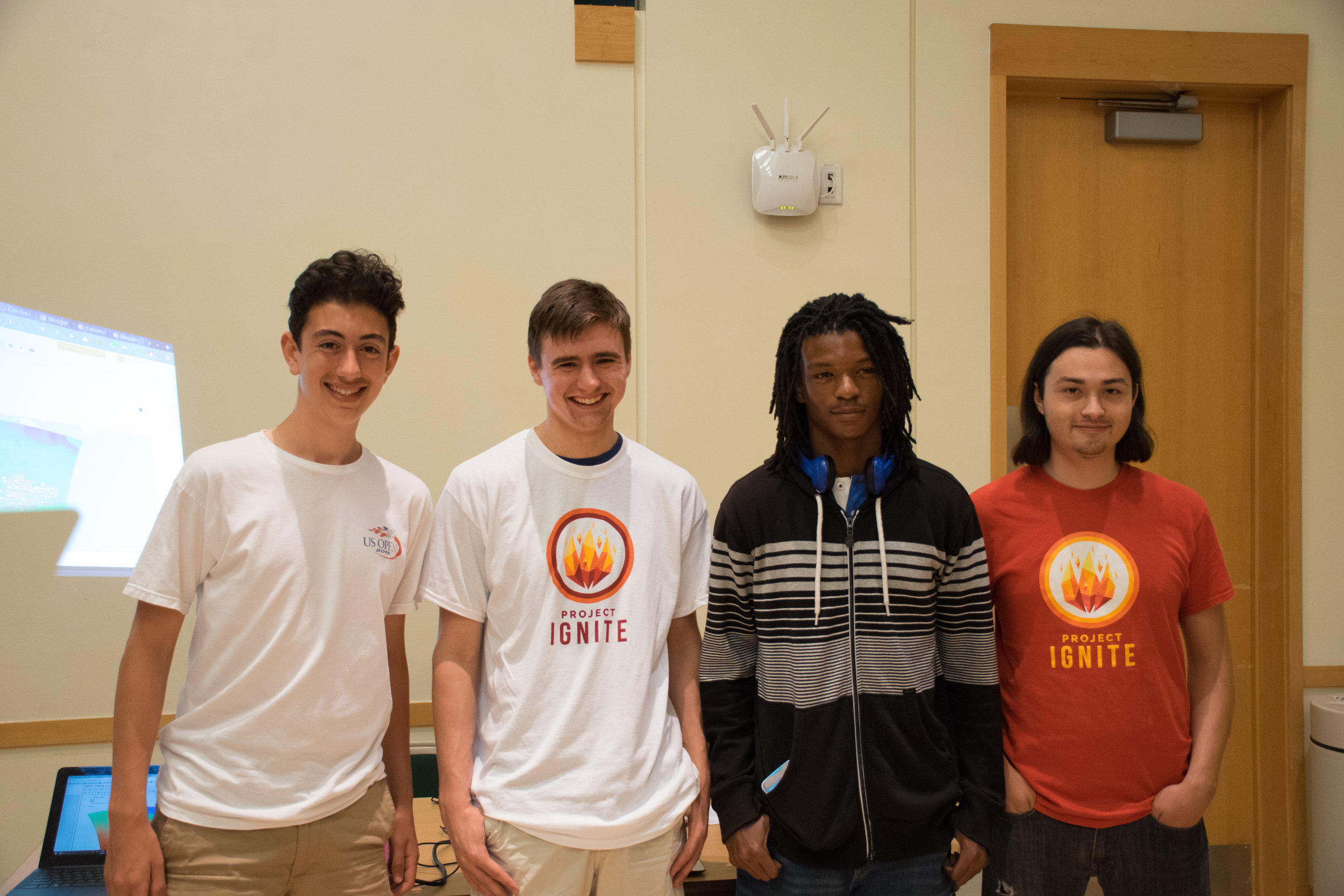Project Archive 2017
Project Archive: Spring 2017
(Click the photos to see a slideshow!)
Das SkúüP
Project Advisors: Aditi Dhablia, Eric Reeder, Michael Mong
In this project, students were challenged to choose an everyday household item and think of some way they could improve upon it. After brainstorming several options, the group chose to redesign the ice cream scoop. In order to successfully complete this project, students had to consider product design, thinking about ergonomics and usability, as well as computer aided design, which they did in Autodesk Fusion 360, and manufacturing techniques such as 3D printing and metal machining. Students identified several key aspects of ice cream scoop design and tested their theories with prototypes until they settled on the final design, which was made out of 3D printed stainless steel and machined aluminum with a cherry wood inlay on the handle.
Educational Tools
Project Advisors: Jonathan Merrin, Jacob Neumann, Joseph Zoller
The goal of the Education Tools project was to devise ways to improve education and make learning more interactive and fun. We went about this by building a basic quiz application, which would allow students to test their knowledge! Along the way, we touched on a diverse set of topics, including web design, UI/UX testing, object-oriented computer programming, API design, version control, virtual reality, and graphic design.
Follow the Leader Robots
Project Advisors: Nick Roberts, Sara Adkins, Jayanth Bharadwaj
Using the C++ programming language, this group implemented path-finding abilities in a pair of Pololu 3pi robots. This involved picking up a lot of robotics skills on the fly: serial communication, the A-star algorithm, bit manipulation, line following, and more.
Ultimately, the group successfully completed a product where one robot (the leader) would send its location to another robot (the follower), and the follower would traverse obstacles to reach the leader's location, repeating ad infinitum. Adding a personal flair, the team programmed the robots to trade off measures of the Mii Channel song.
Musique Concrète
Project Advisors: Chris Ng, Valerie Senavsky, Ben Kaplan
The students aimed to create a musical song through sounds found in our everyday lives. A water bottle became a bell, a car door became a kick drum, and a vending machine became a synthesizer lead. Armed with a field microphone and Ableton Live (a music production program), the students realized their vision and along the way developed skills in using their tools.
The largest hurdle for these students was to combine their many song ideas that ranged from a fully percussive piece to an atmospheric piece into one coherent song. The students took to the challenge and were able to create transitional phrases from one piece to the next and created what they set out to.
Photography App
Project Advisors: Ashley Wong, Alex Jackson
In this project, students wanted to learn photography skills and incorporate them into an original app. Some basic features that were proposed included taking pictures, editing the pictures, and sharing content with friends and family. Though the students were no photography experts at the start, through weekly photo project critique by advisors and peers, they grew and learned how to take the "perfect" picture. To become versed in the Xcode and Objective-C programming languages, students followed weekly tutorials and were given instruction during workshop as well.
One of the greatest obstacles was learning how everyone's part fit into the whole project. In some workshops, one team would be blocked because another team hadn't finished an important part of the app. By the end, the students successfully completed their own app with custom graphics. The central feature was a photo stream, showing off six custom filters designed and made by the students. Accompanying the app was a personal photo project compiled over two weeks, representing a central theme important to each individual student.
Portable Battery
Project Advisors: Jake Zimmer, Grant Schwabacher
The students wanted to create a way to charge their phones on the go using renewable energy as a way to not only "go green" but also to ensure that they would always have access to electricity. Under these criteria, the project had to rely on a readily available resource and be able to store that energy for when that resource was unavailable. They assessed the viability of power sources ranging from solar to biomass, ultimately deciding to go down two paths simultaneously: electric generators and hydrogen fuel cells.
The students learned about the fundamentals of electricity, power, and circuitry while also learning about the types of renewable technology in use today. The greatest challenge for the students was finding a renewable source that could generate significant enough power to charge a phone. While many power sources work well on a larger scale, a device the size of a phone charger poses many challenges. The students worked hard to bring these ideas to fully functional prototypes and in the end were able to successfully charge a phone using their battery pack powered by renewable energy.
Cy-Bo-Ha
Project Advisors: John Choi, Akshat Prakash, Kevin Apolo
The students set out to create cybernetic robot hands, or to be more specific, an articulated robot hand with 5 motors that could be controlled by an Arduino device in conjunction with various hand-tracking sensors, such as Leap Motion, Myo, and flex sensor gloves. The students had to learn electronics wiring, 3d printing, computer aided design, Python programming, and the nature of iterative rapid prototyping.
The biggest challenge the students had to overcome was learning how all the separate pieces of engineering integrate together to work in unison; the software, mechanical, and also electrical sides.
The final product was a set of 2 cybernetic robot hands, one made of 3D printed parts, another made of loom tubing, all controllable through either an Leap Motion, Myo, or flex glove sensor apparatus.
Sensory Music Experience
Project Advisors: Natalya Buchwald, Angela Rubin
Our team started with a vision – we wanted to create an experience using technology that fully integrates the majority of our senses. This idea only turned into something tangible after hours of brainstorming, designing, and planning. Our team successfully took this abstract concept of artificial synesthesia and turned it into a iOS Virtual Reality application. Ultimately, we created a VR experience that raised, lowered, or maintained your heart rate based on music and video. Students gained skills in design thinking, music editing, and Swift programming. We tested our final product and yielded above an 85% success rate for heart rate changes!
Weather App
Project Advisors: Aiko Kyle, Brian Scheuermann, Adam Dickter
This project set out to explore the world of weather forecasting and modeling. The group chose to create a weather visualization app that would display forecasted weather patterns across the map in an interactive website. To accomplish this task, they learned how to program in Python and use a variety of Python libraries. They created code which accesses the raw data of weather forecasts from servers at the National Oceanic and Atmospheric Administration then processes that data and an displays it on interactive maps. Their website can be viewed at weather.projectignitecmu.org.
